Minimalism in an environment of expressionism
Designed by BAU (Brearley Architects + Urbanists), Tonglu Archives Building is located in Hangzhou, China. In China, the perimeter block typology doesn't usually return the Floor Area Ratio (FAR) necessary to satisfy inner-urban densities. This leads to an over-reliance on detached towers to meet FAR requirements. The perimeter block with a tower extrusion, however, presents a useful hybrid.
'it is the least we could do: minimalism in an environment of expressionism.' - Steve Whitford (Partner)
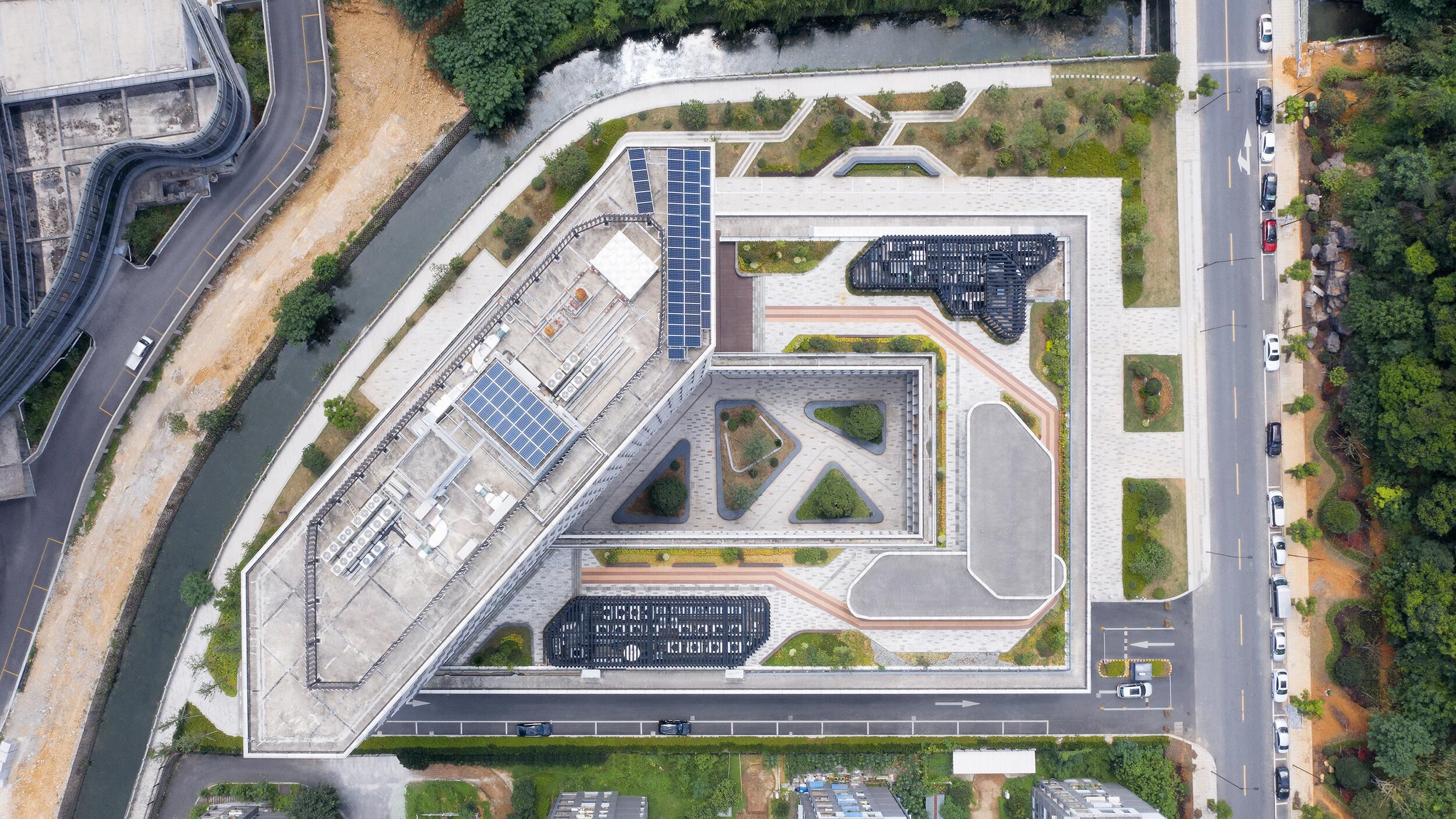
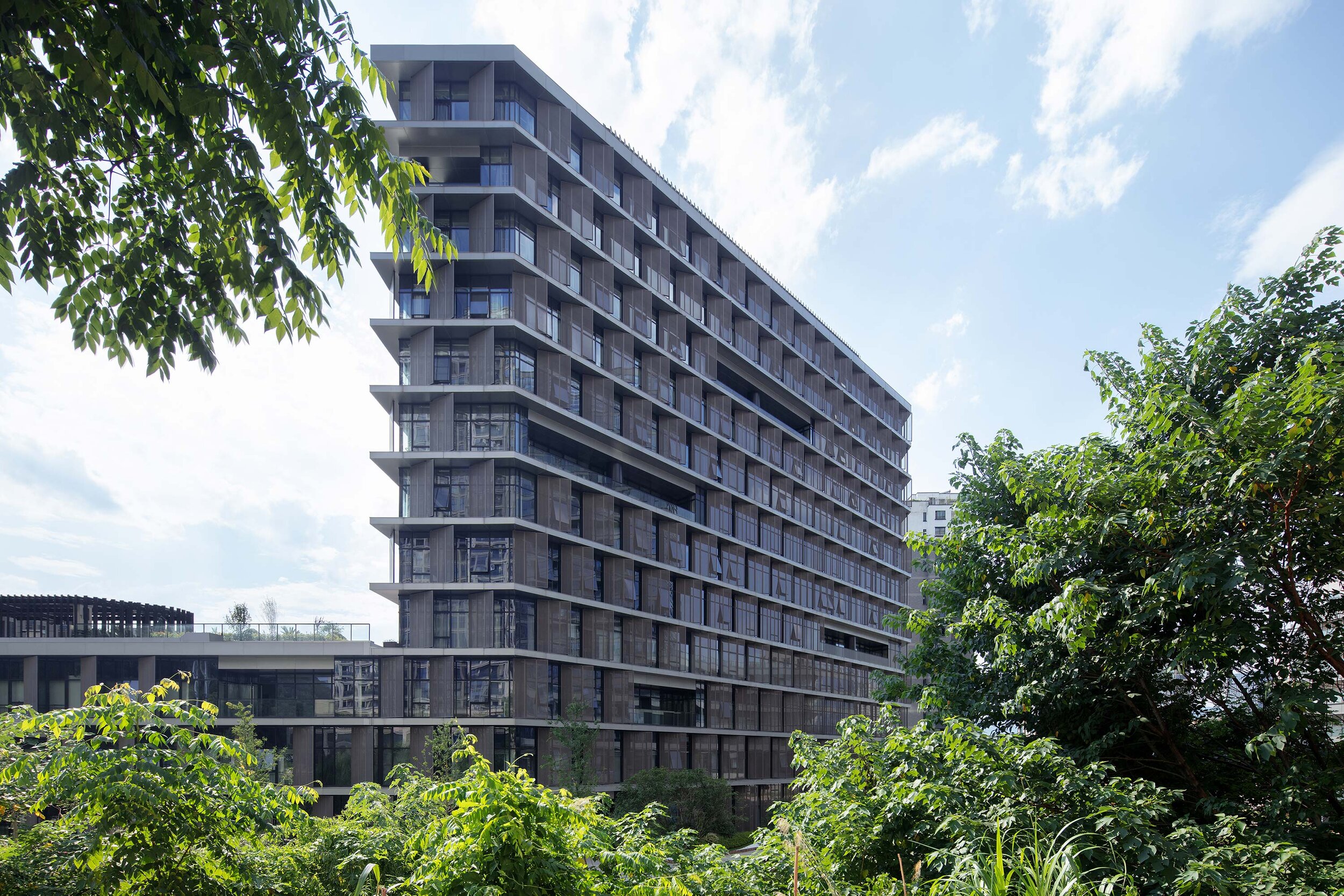
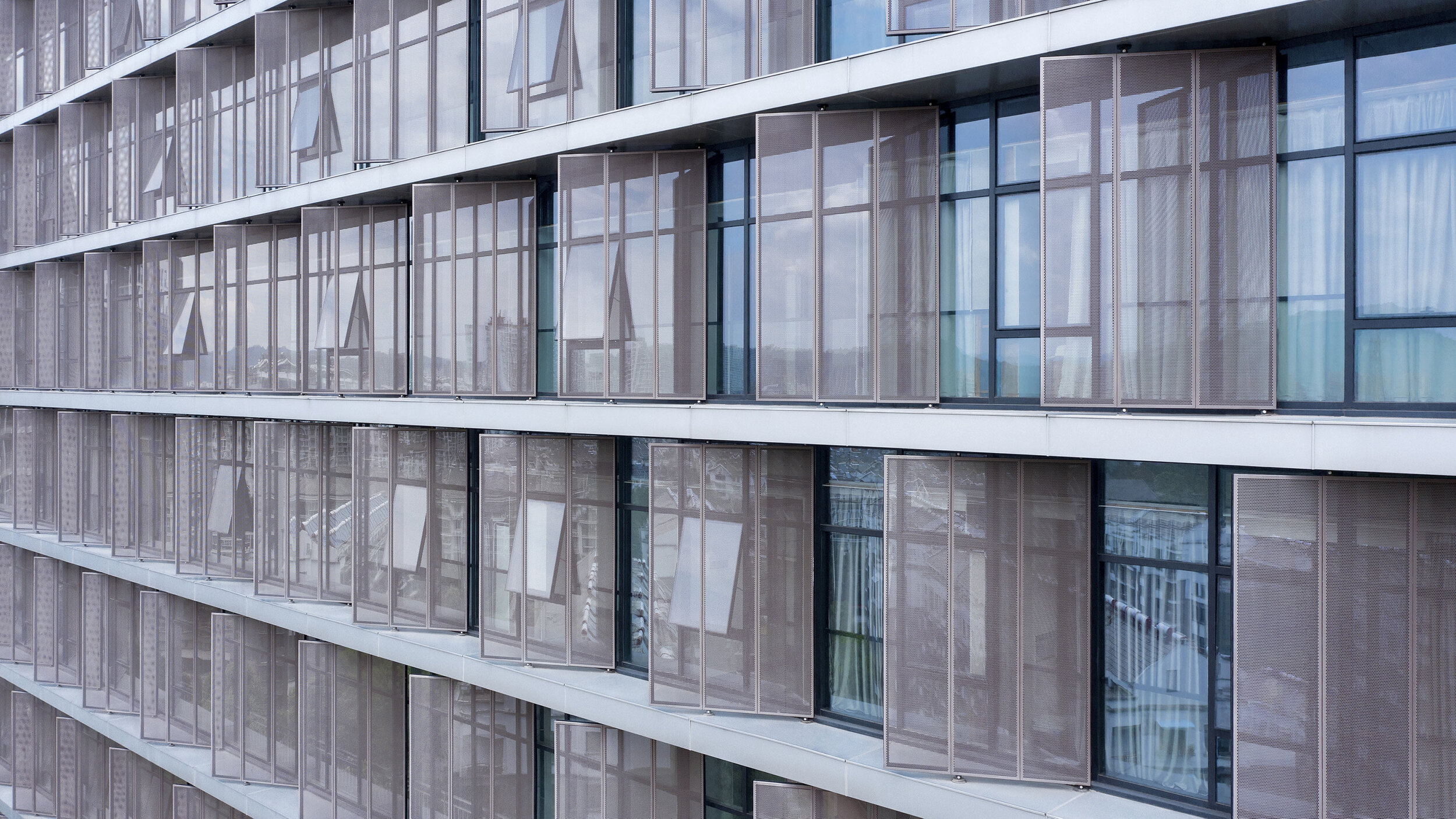


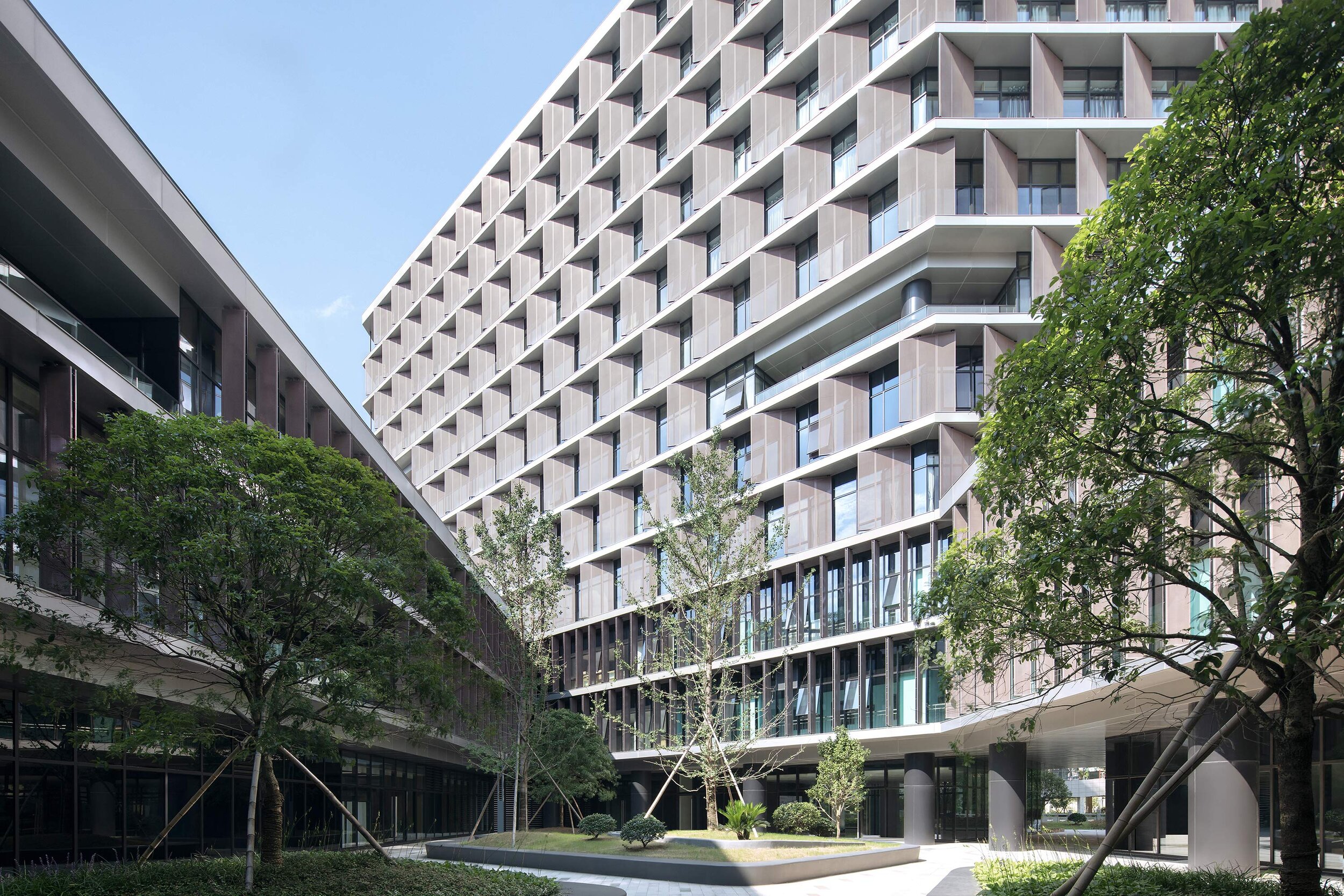
Hybrid typology
Designed by BAU (Brearley Architects + Urbanists), Tonglu Archives Building is located in Hangzhou, China. In China, the perimeter block typology doesn't usually return the Floor Area Ratio (FAR) necessary to satisfy inner-urban densities. This leads to an over-reliance on detached towers to meet FAR requirements. The perimeter block with a tower extrusion, however, presents a useful hybrid.
The advantages of the perimeter block are combined with the capacity of the tower to maximize floor area. (Positive reinforcement of active urban street edges; well ventilated and naturally lit building interiors; and an internal courtyard that has the options of being private, semi-private-semi-public, or public space)
Metal petals
Surprisingly, all facades required vertical screens to prevent unwanted heat gain. Elegantly thin slab edges are projected past the window line and form horizontal ledges to sit vertical perforated metal sunscreens. These screens are closed enough to block the sun, yet open enough to not impede views out. Decks are then cut into the petals to provide outdoor space for each floor level and subtle visual relief to the petals' wall.
Minimalism 1. – Expressionism 0.
The program for this local government building is different: document archives, testing laboratories, staff canteen, a commercial street-front cafe, and a variety of closed and open office spaces. This suggests an architectural articulation of these programs. Besides, the typological hybrid offers an indication of the perimeter building and the tower.
However, rather than exploring these apparent solutions, the questions posed were: What are the program's differences? What are the differences generated by combining the perimeter block and tower typologies? And finally, what is the least we need to do to engage with these differences?

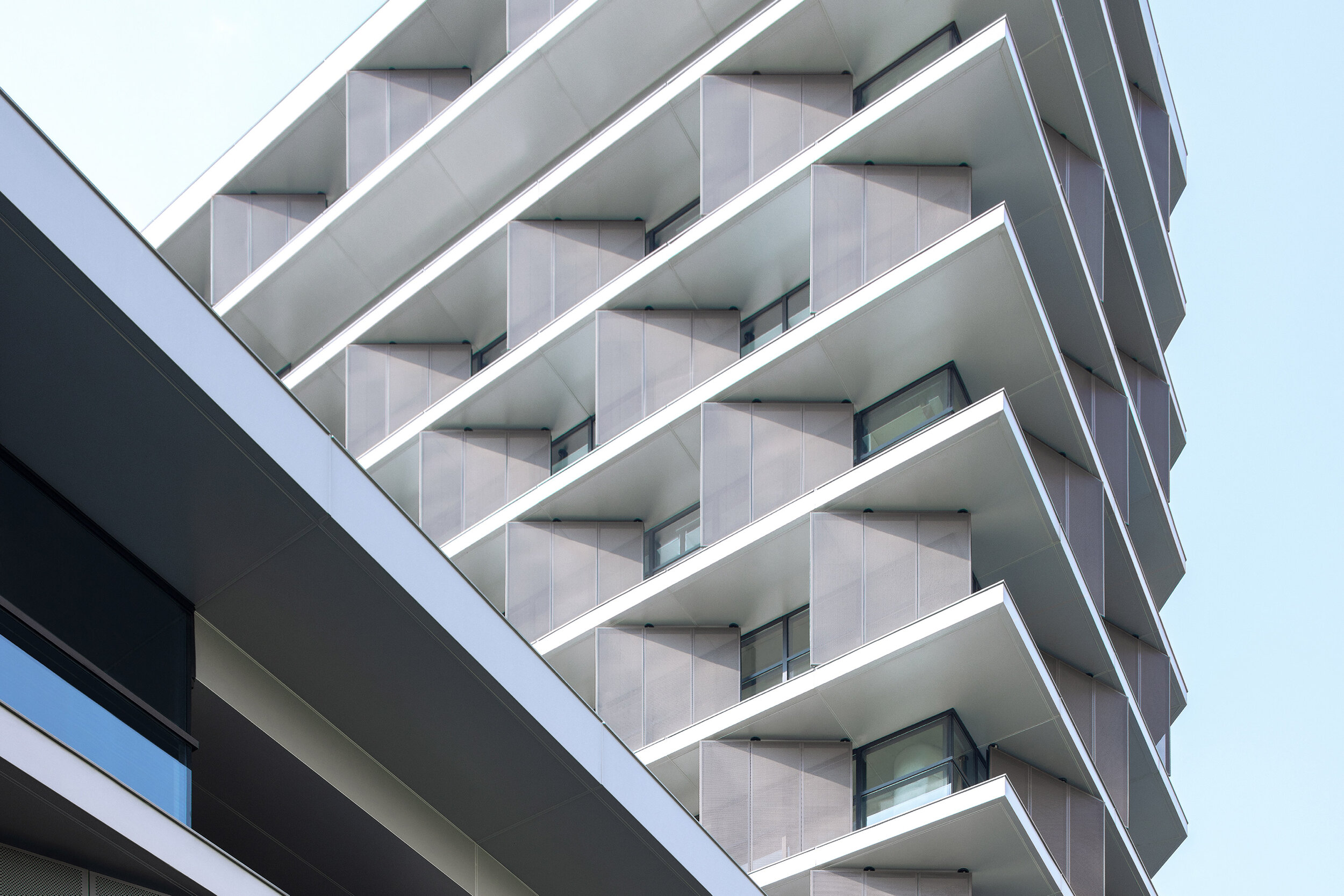
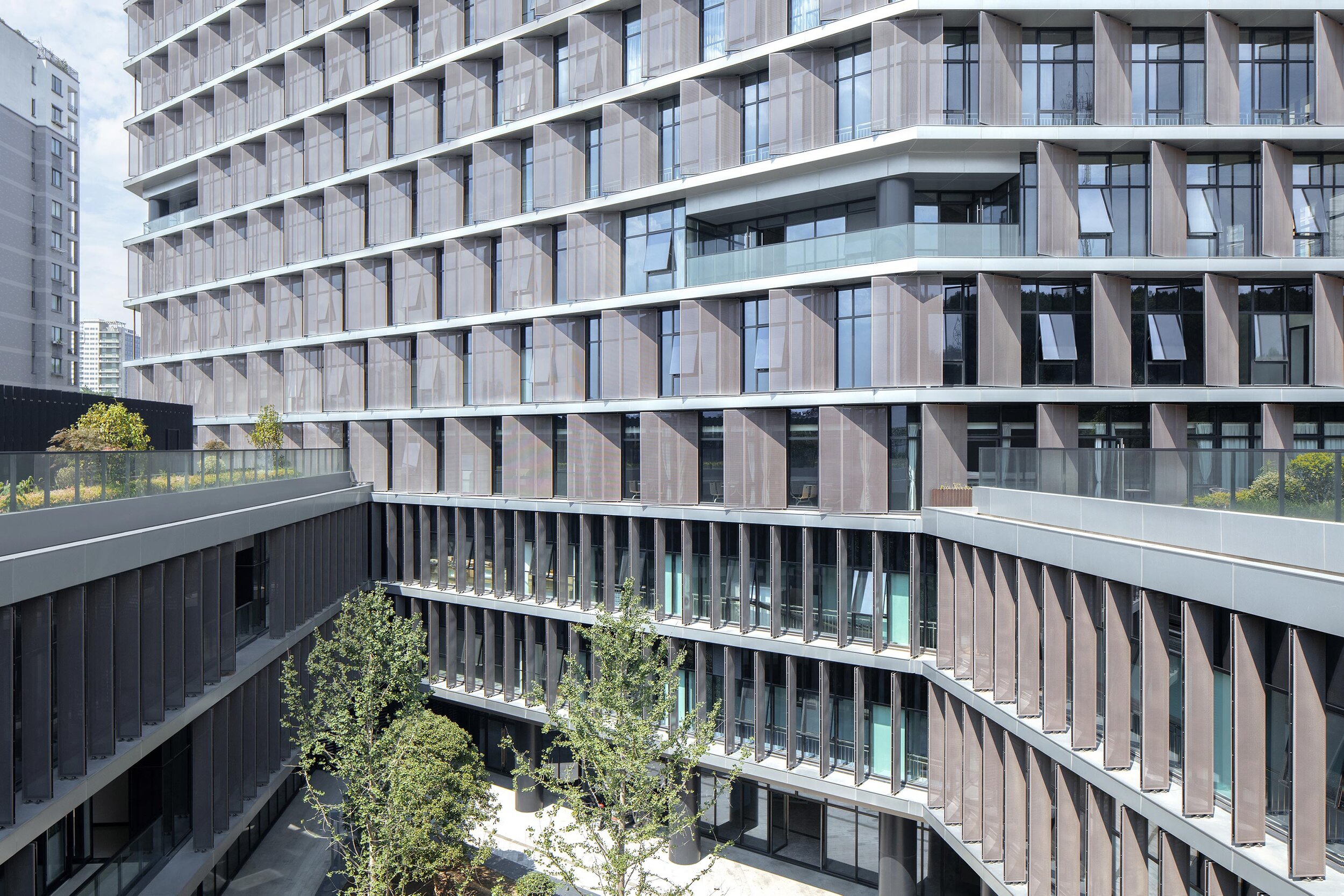
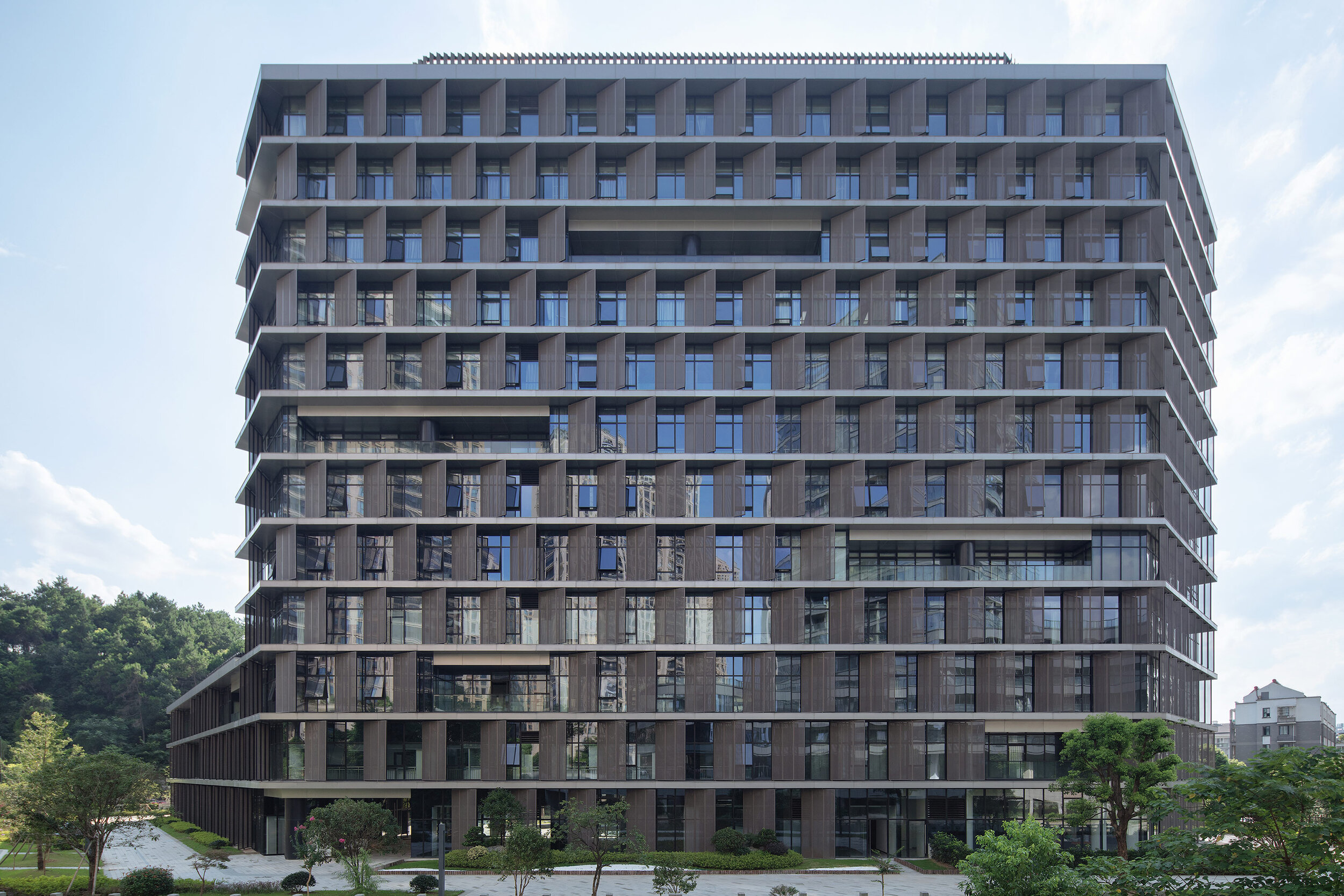
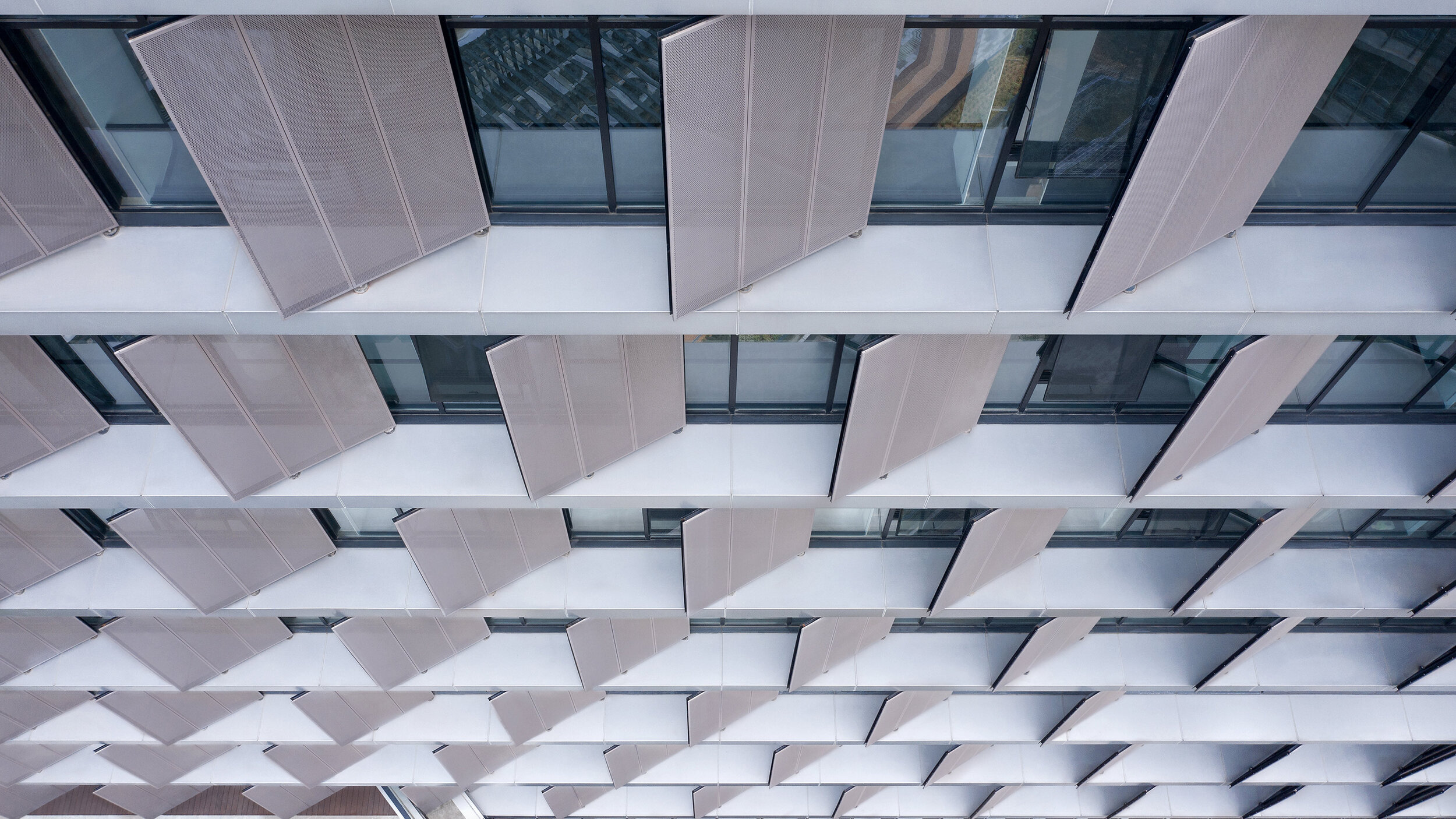
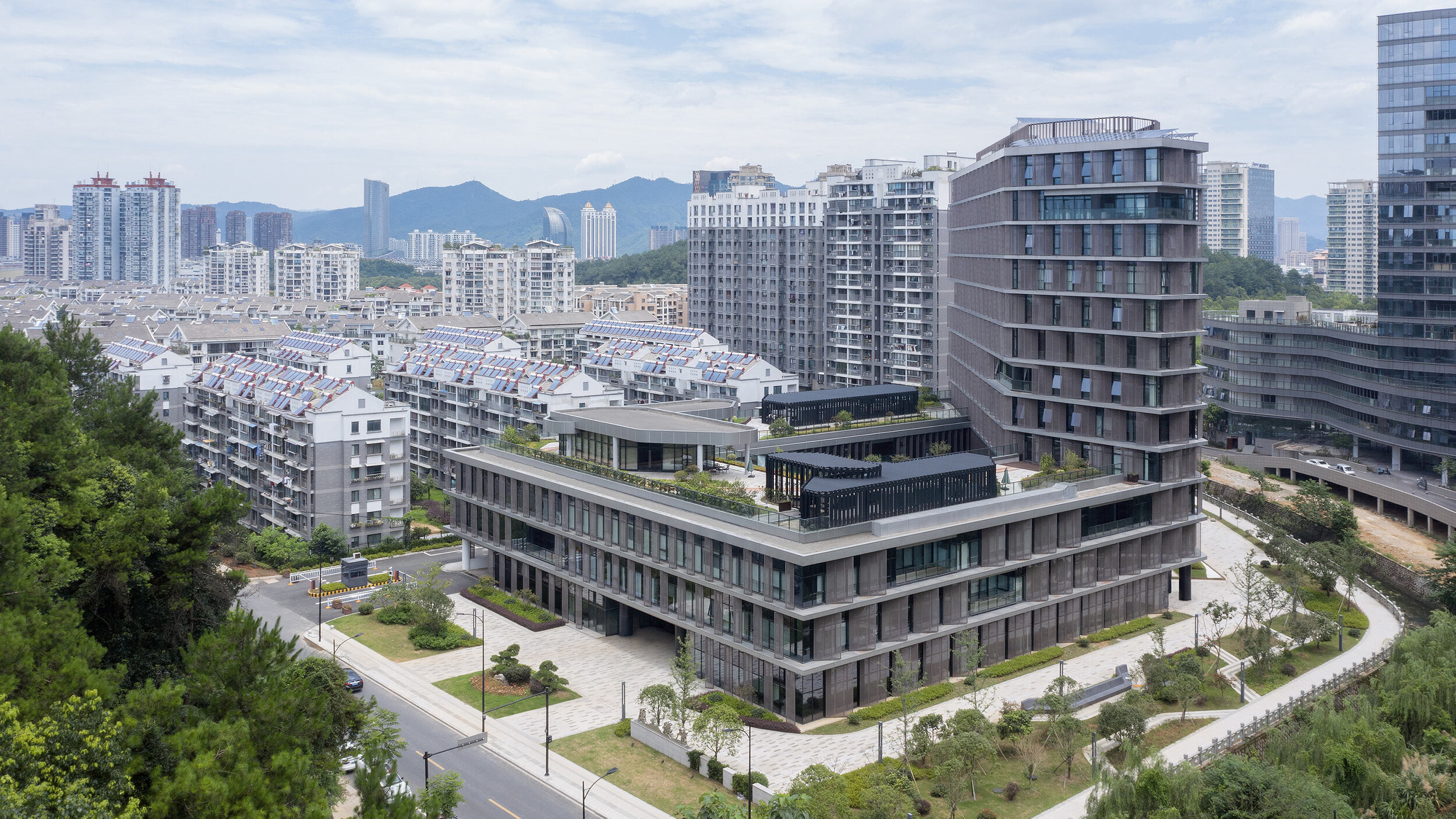
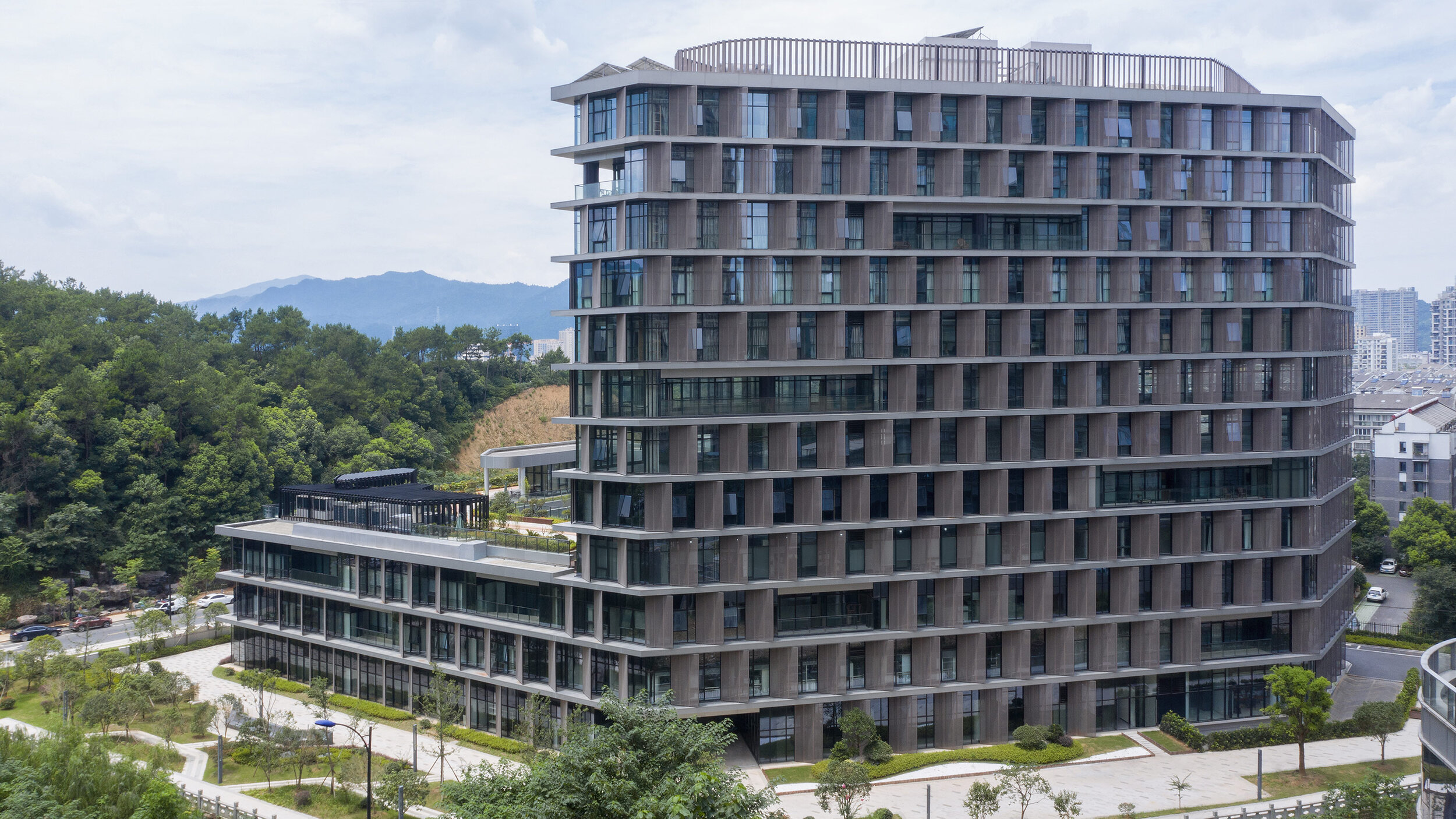
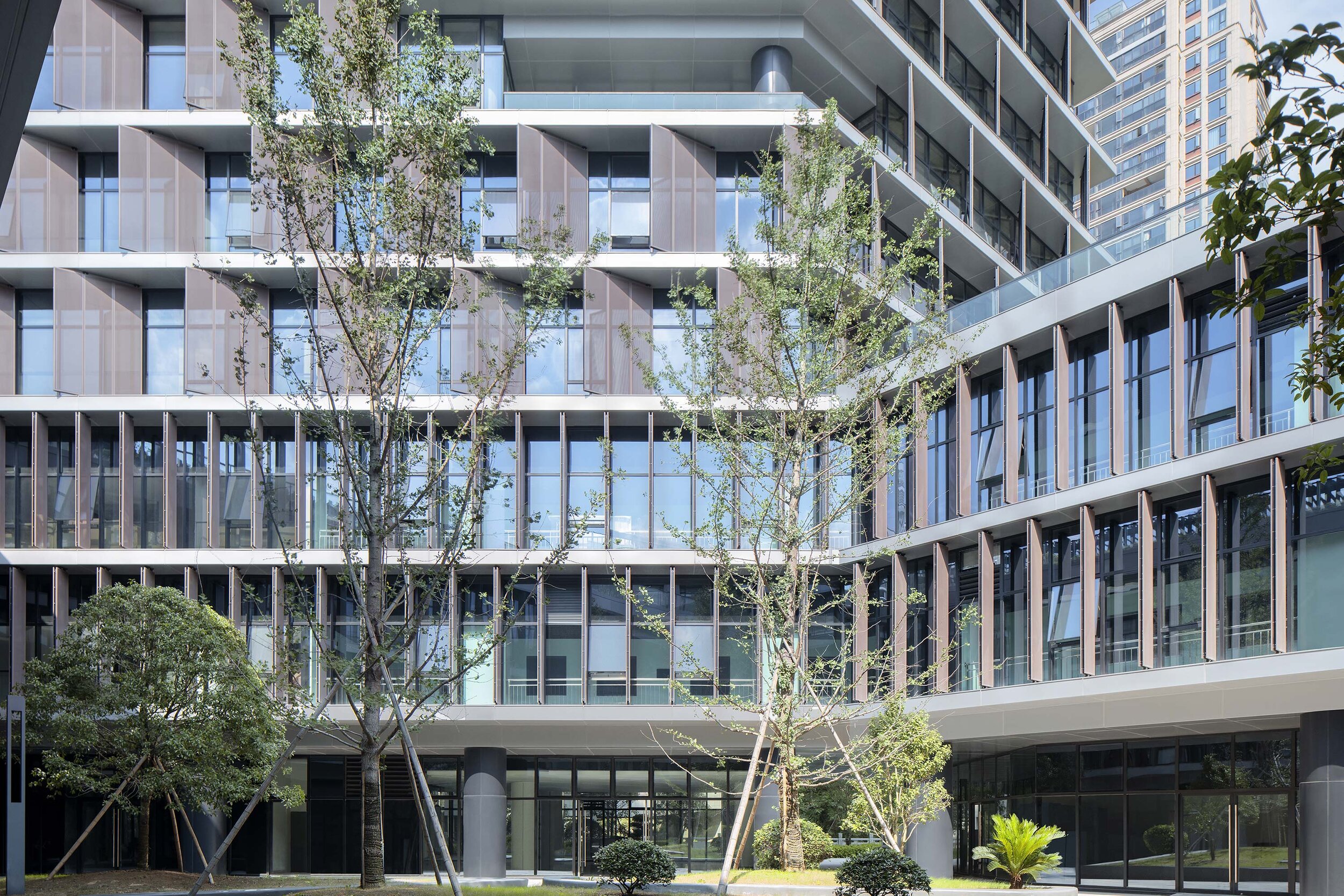

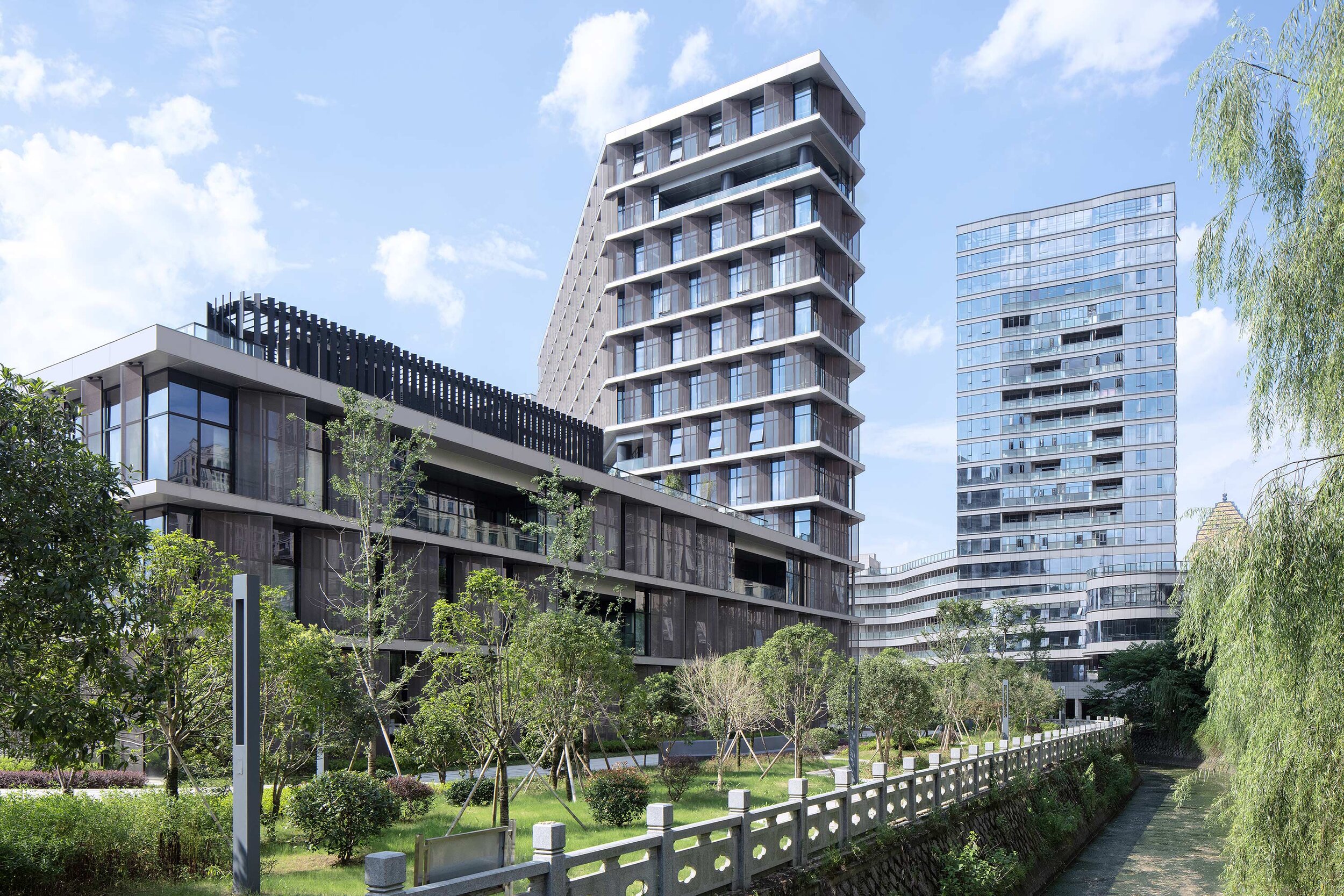
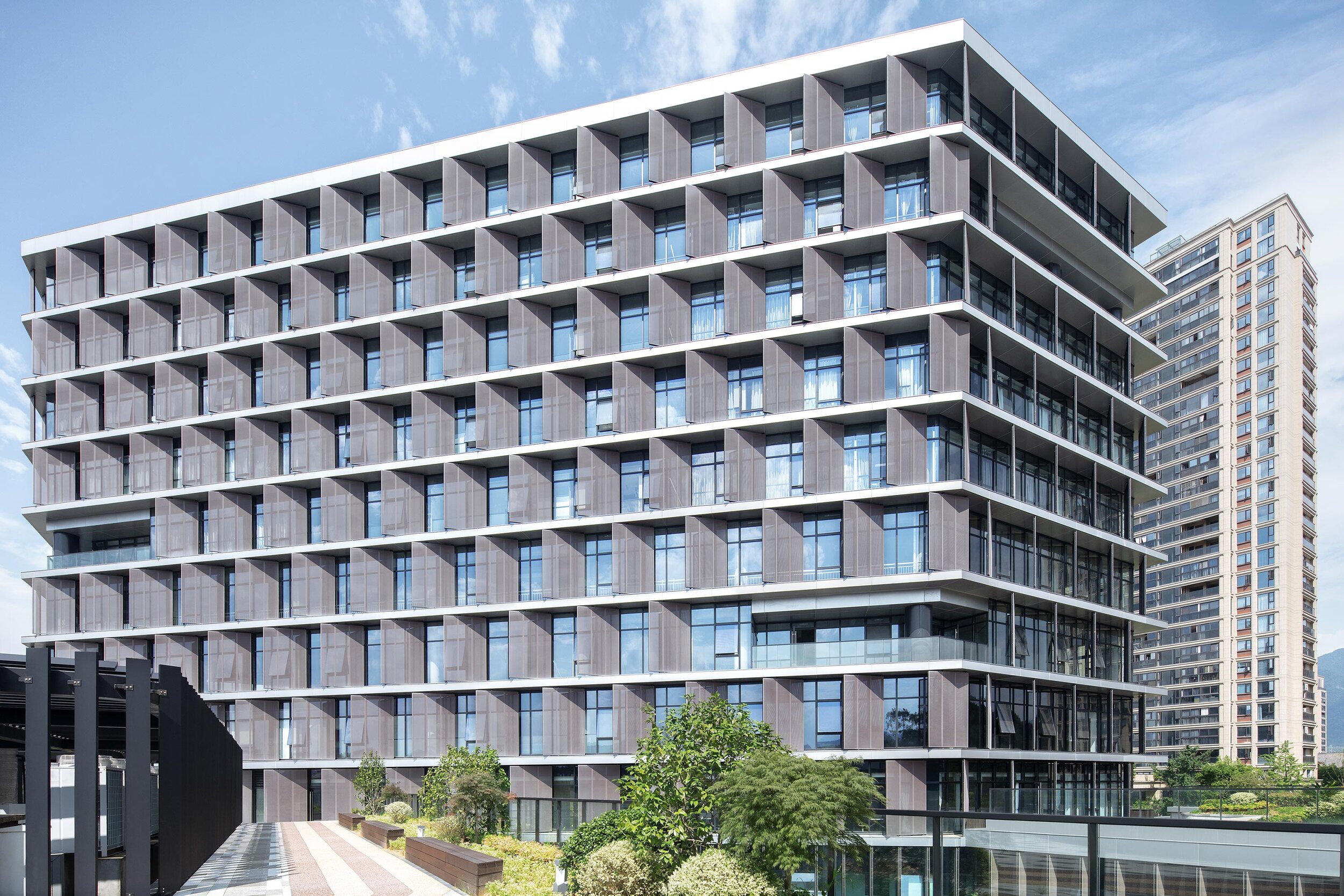
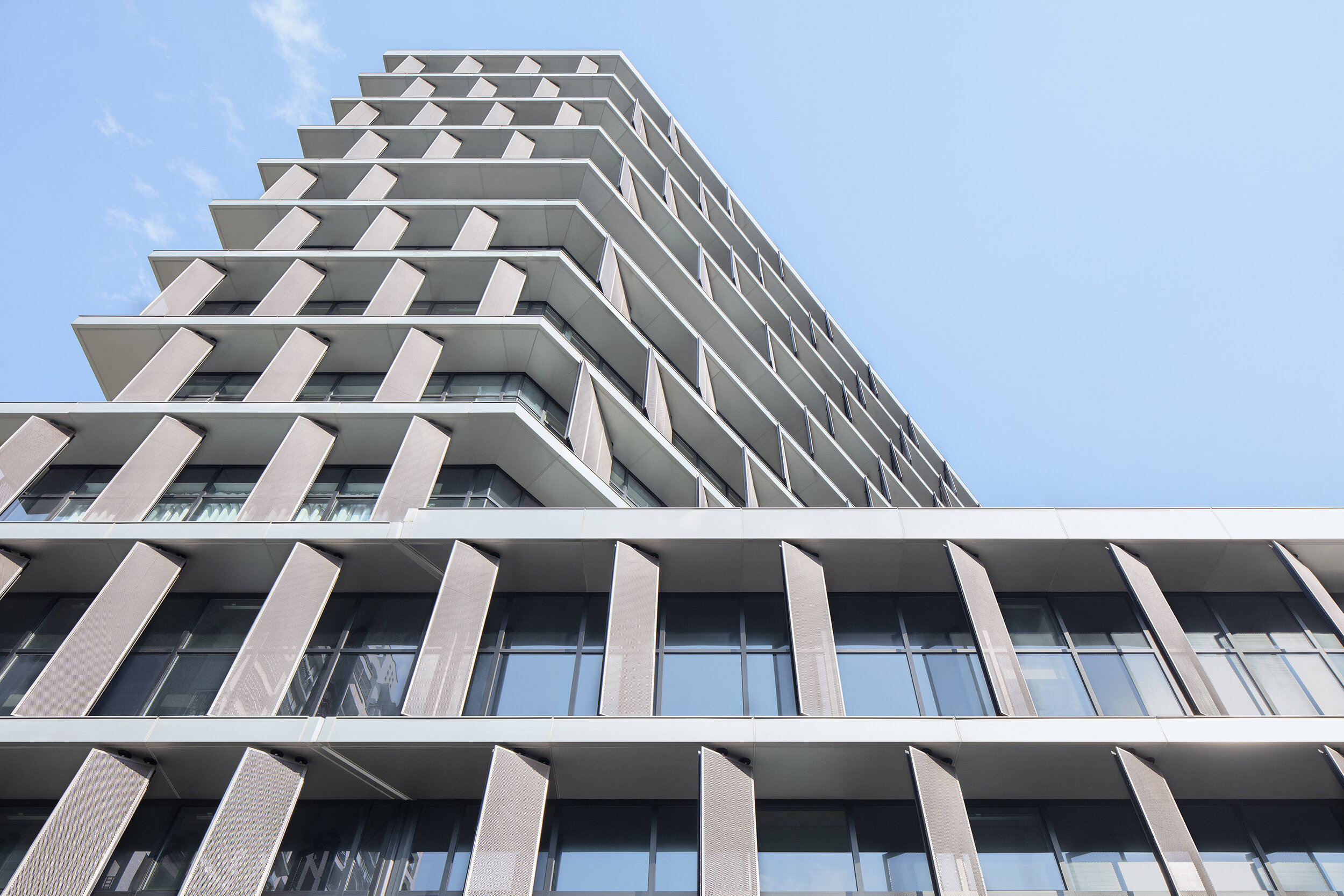
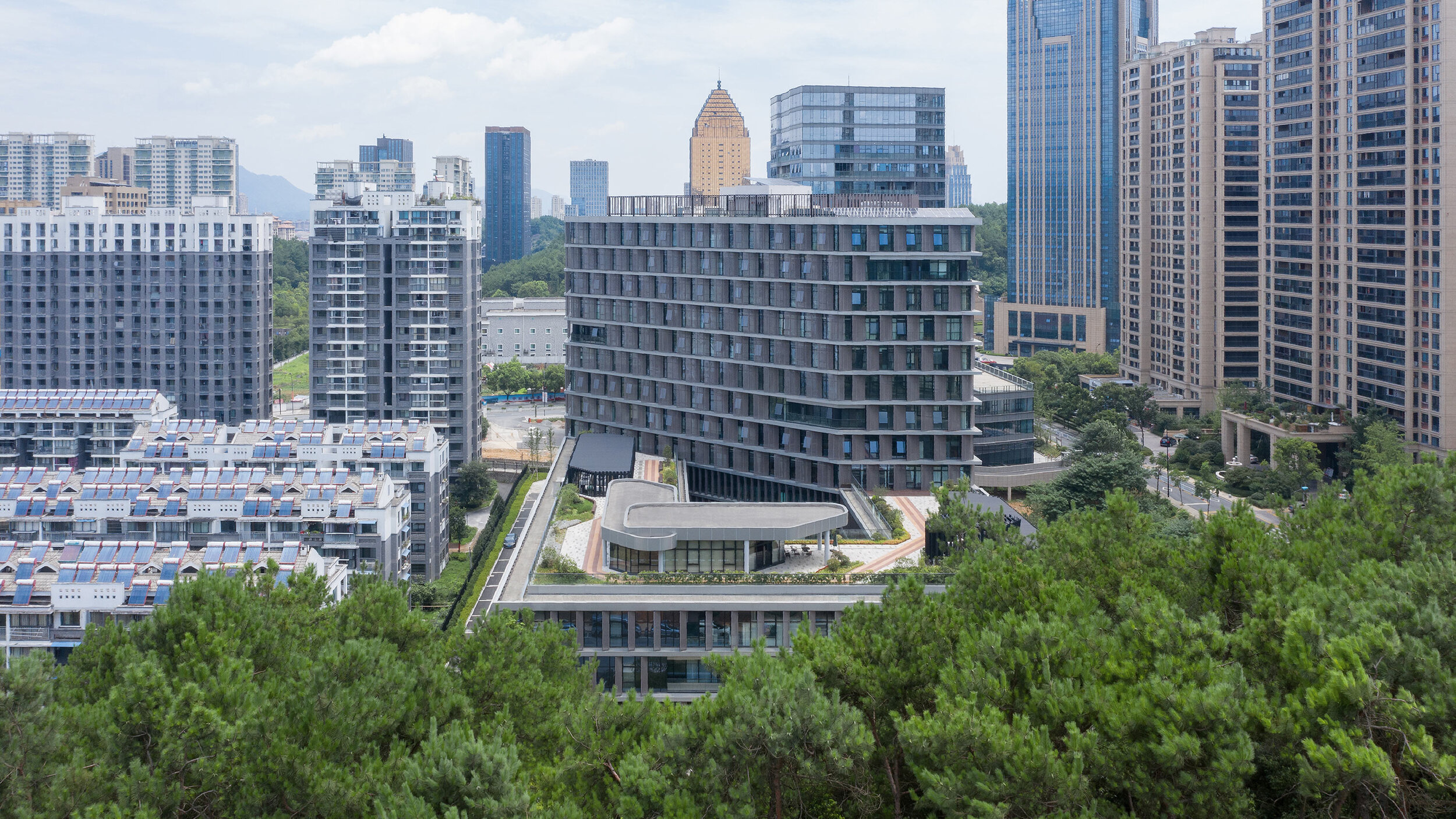
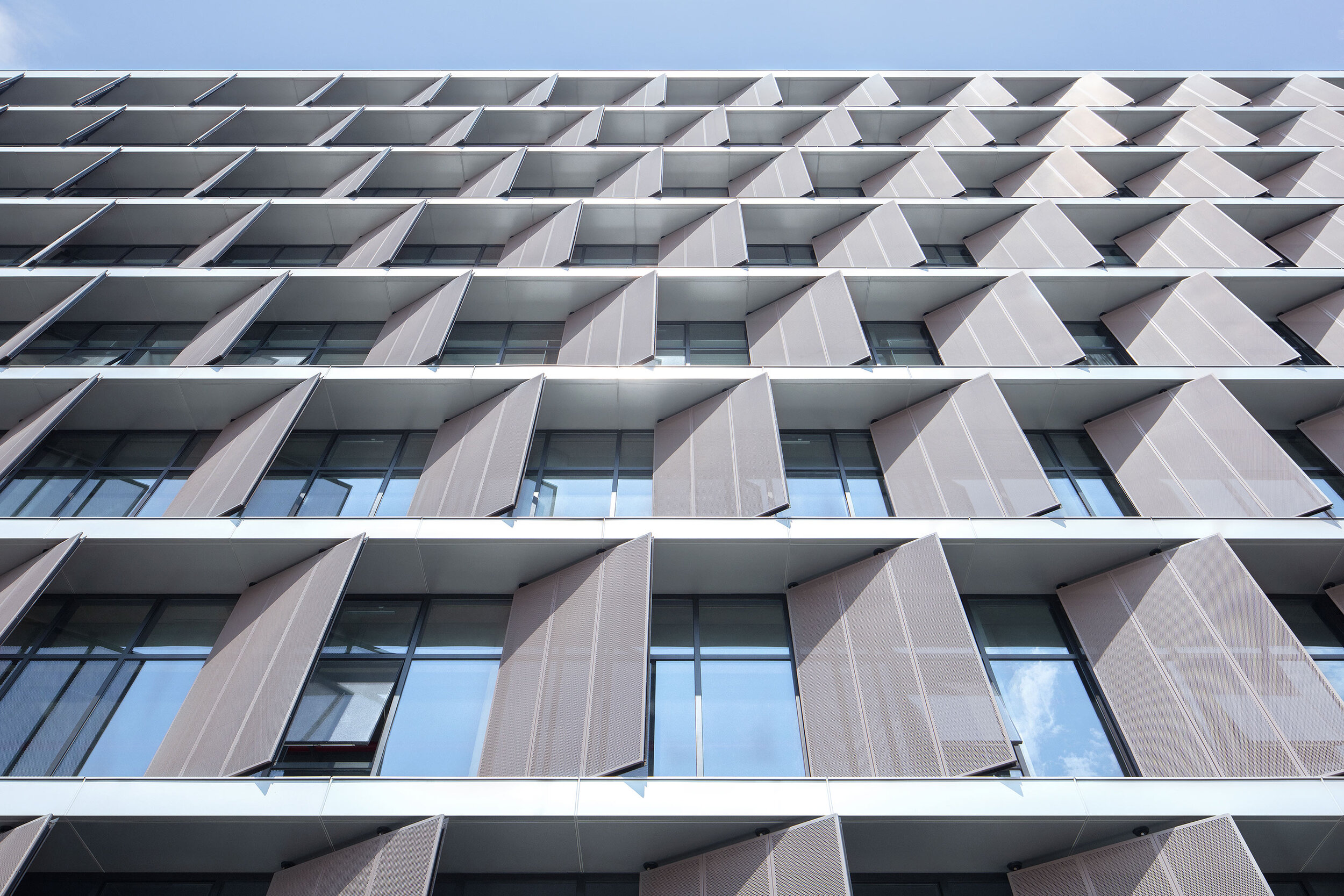

Semi-public courtyard
This centralized circulation strategy creates a semi-public outdoor space and provides opportunities for encounter and exchange among different public departments. It also provides an active area for lunch in a protected courtyard landscape.
The courtyard directly links the public footpath off the main southern entrance to a proposed pedestrian bridge to the northeast of the site. This diagonal shortcut further reinforces the semi-public nature of the courtyard.
Roofscape as displaced landscape
To encourage the staff to get out of the building and enjoy the river frontage or the courtyard, the paving from the ground floor interiors flows directly into the yard and out to the river's edge – a robust strategy for the future, when the ground floor develops more pubic and/or commercial programs.
The tower overlooks the perimeter block roof, and this space provides an opportunity for a significant private outdoor space for the building tenants. A garden pavilion for staff lunches or informal meetings sits within a roofscape that presents as a displaced landscape. The staff canteen opens on to this roofscape. Plant rooms have been disguised as additional garden pavilions.
More visible than we think
In a commercial and retail environment where every building is trying hard to be seen as different from its neighbours, advertising and signage dominate streetscapes. Buildings are becoming extensions of corporate logos and marketing campaigns – a minimal, elegant and calm public building may be more visible than we think.
Project Data
Project Name: Hangzhou Tonglu Archives Building
Project Status: Completed 2019
Location: Tonglu, Hangzhou, Zhejiang Province
Client: Tonglu Urban Development and Management Co., Ltd.
Typology: Office
Program: Document archives; testing laboratories; office.
Year: 2016—2019
GFA: 26,700 m²
Construction Cost: RMB 136 million
BAU Project Team: James Brearley, Jens Eberhardt, Chen Zhiyong, Luo Huaili, Steve Whitford, Gao Weiguo, Chen Jian
Builder: Hangzhou Harbour Construction Co., Ltd.
Engineer+Documenting LDI: China United Engineering Company
Photographer:Xia Zhi
Light of hope - Tokyo Michiterasu 2020 winter illumination
This unique light and illumination event has become the area's winter tradition since Tokyo Millenario was first held in 1999. This year, Tokyo Michiterasu 2020 is still hosting during the global pandemic, hoping to light the way of all of us to the future: Michi (unknown) and terasu (light). This event hopes to deliver a message of support and thanks to the people working towards the new era (the "new normal") from Japan's heart. *fRAum®︎ is the main visual for art calligraphy.
Light of hope, one of the latest projects created by KAZUKI KUMONO & YOKO FRAKTUR This light and illumination event has become the area’s winter tradition. This year, Tokyo Michiterasu 2020, with the wish of lighting the way to the future: Since we may not be able to visit in life but you may also visit online during the pandemic. They hope to deliver a message of support and thanks to the people working towards the new era (the “new normal”) from the heart of Japan. This is one of the winter illuminations that you can enjoy both on-site and remotely.
fRAum®︎ is the main visual for art calligraphy.
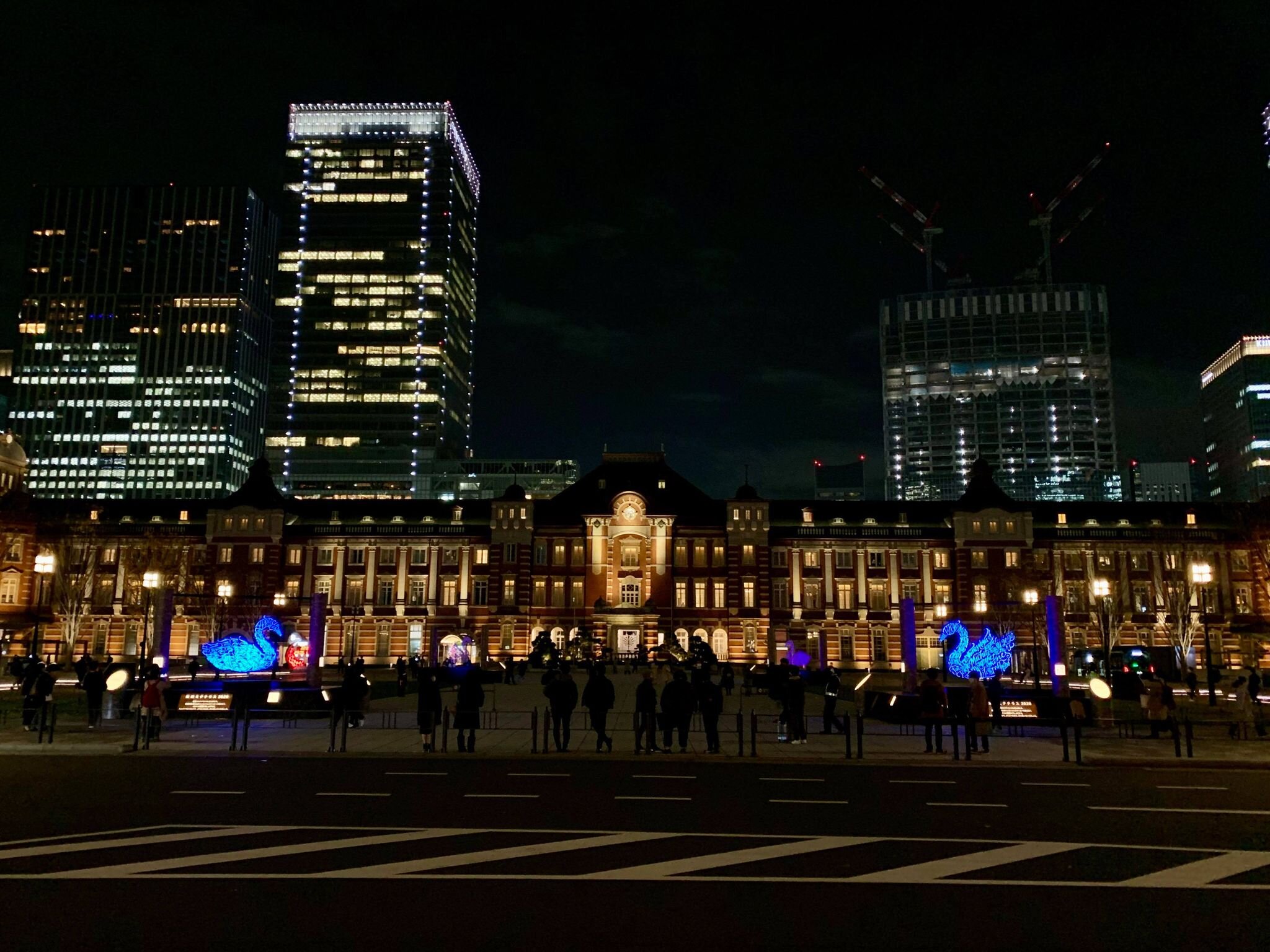
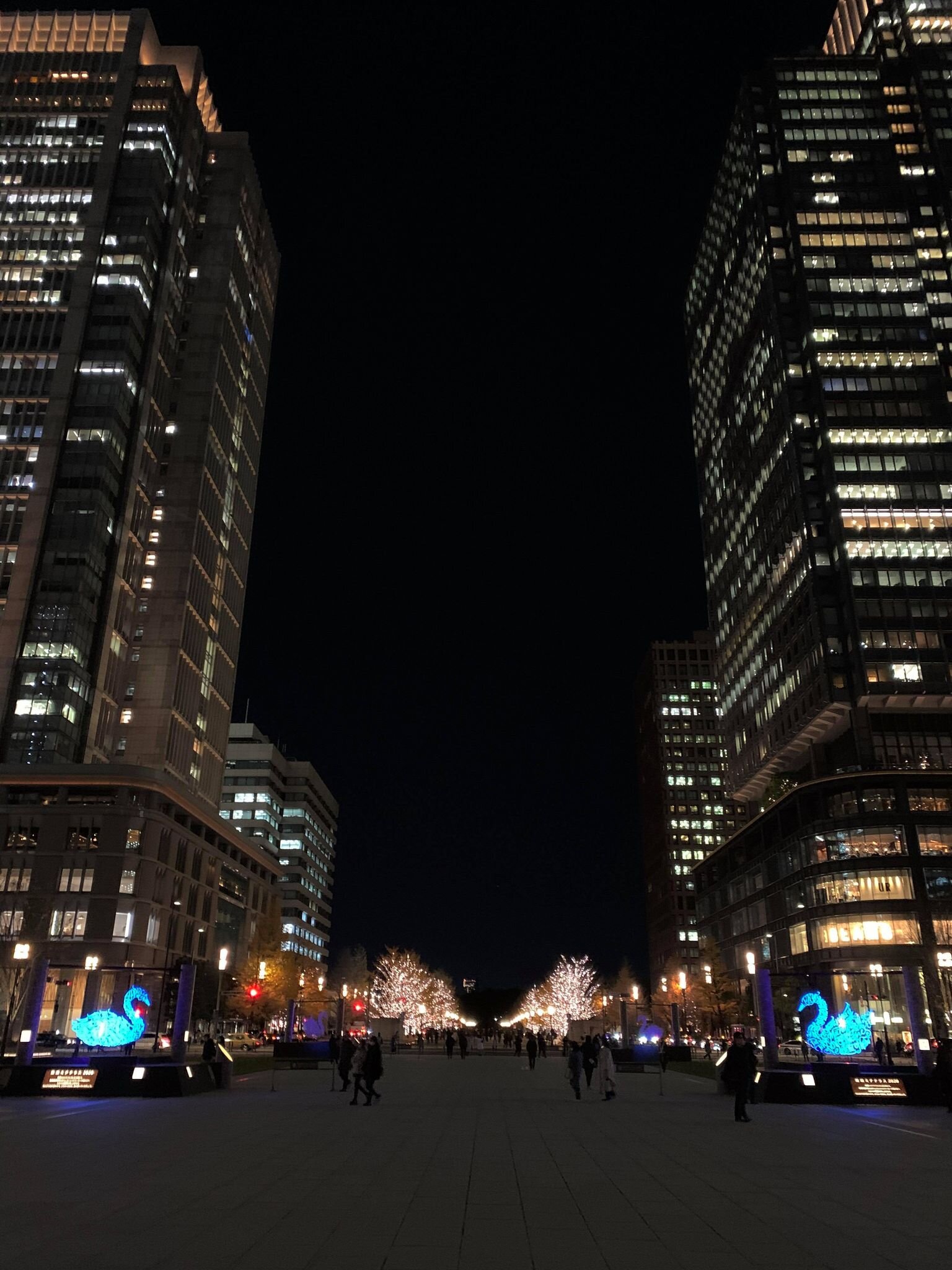
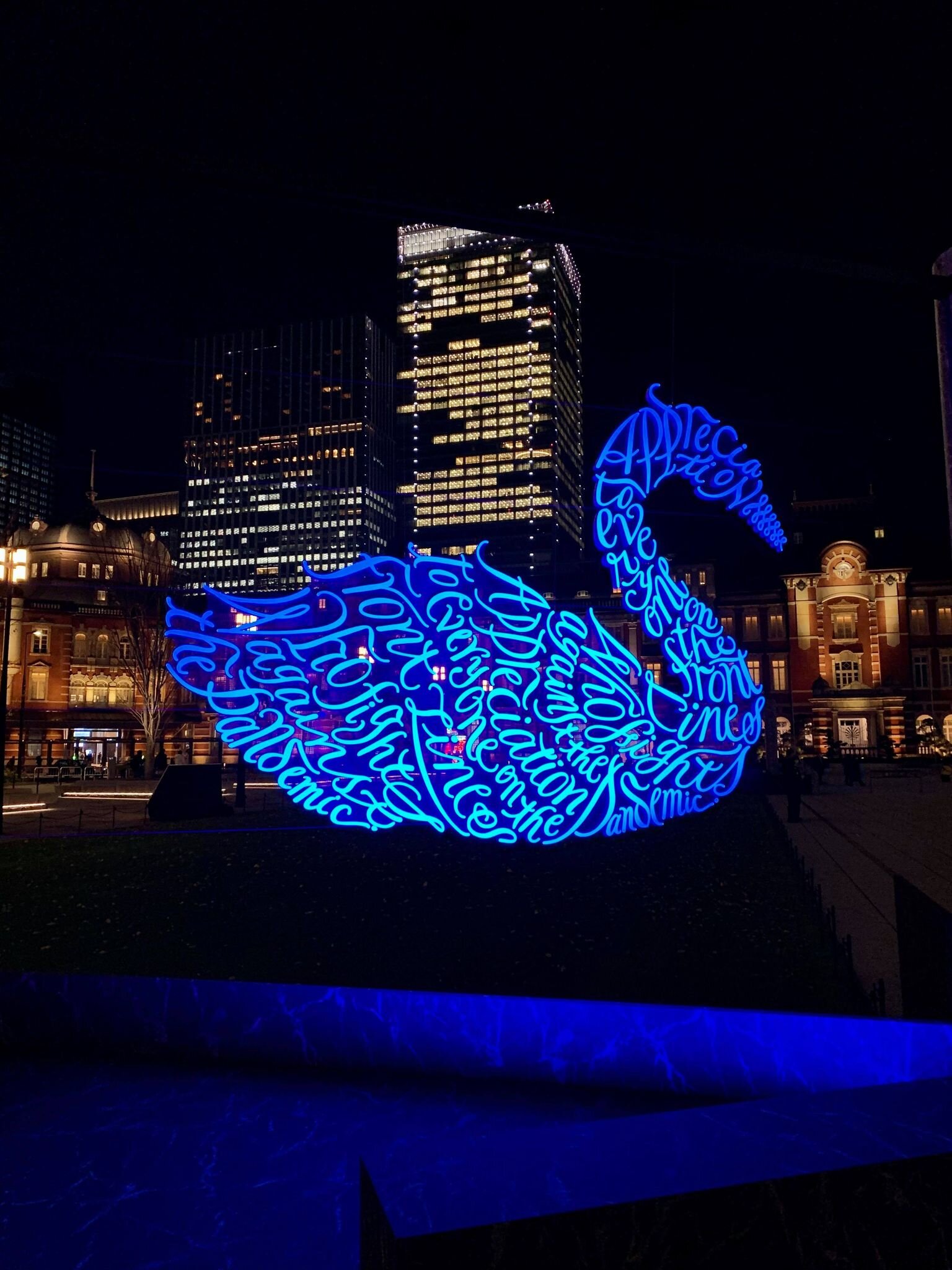
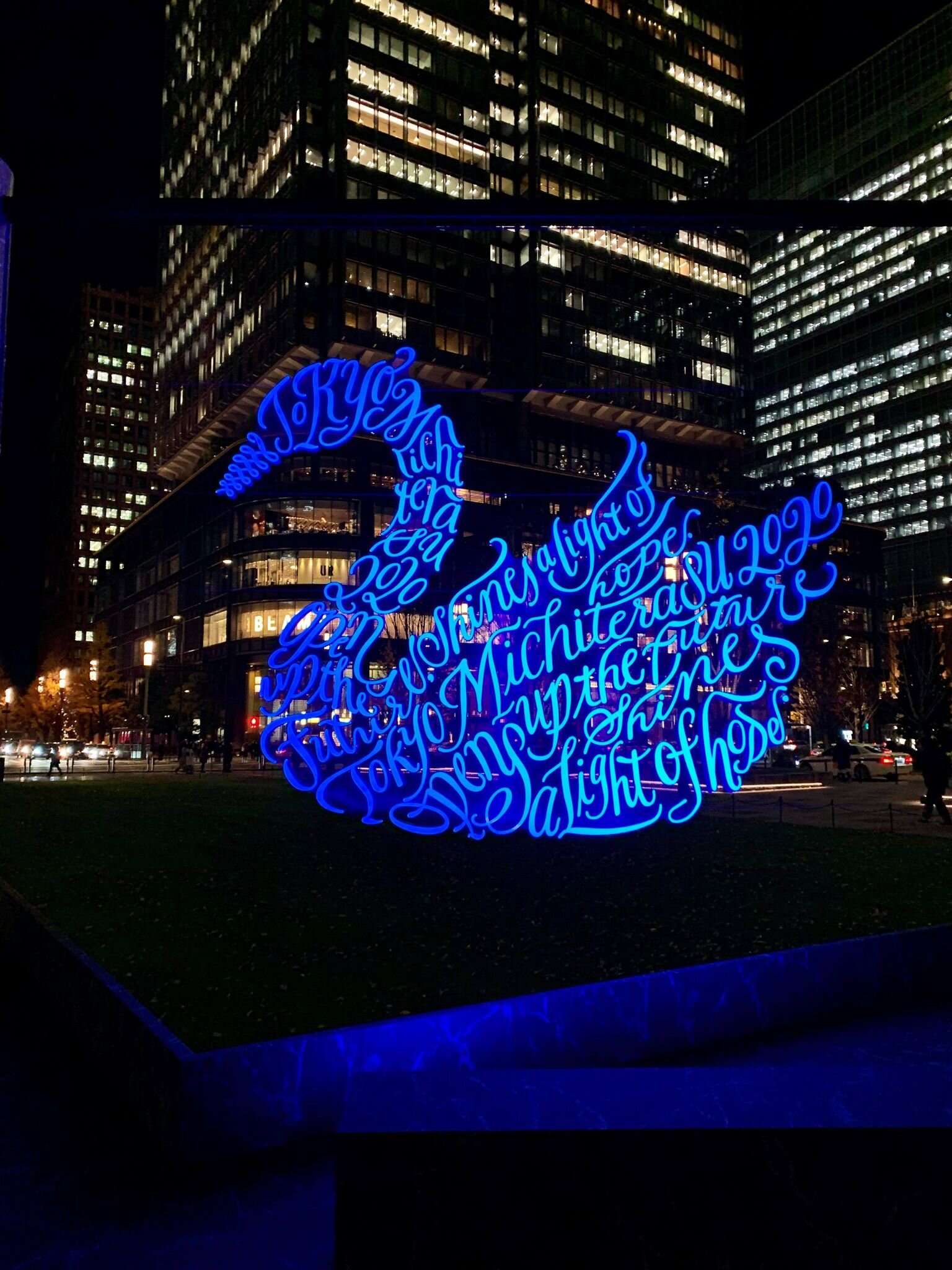
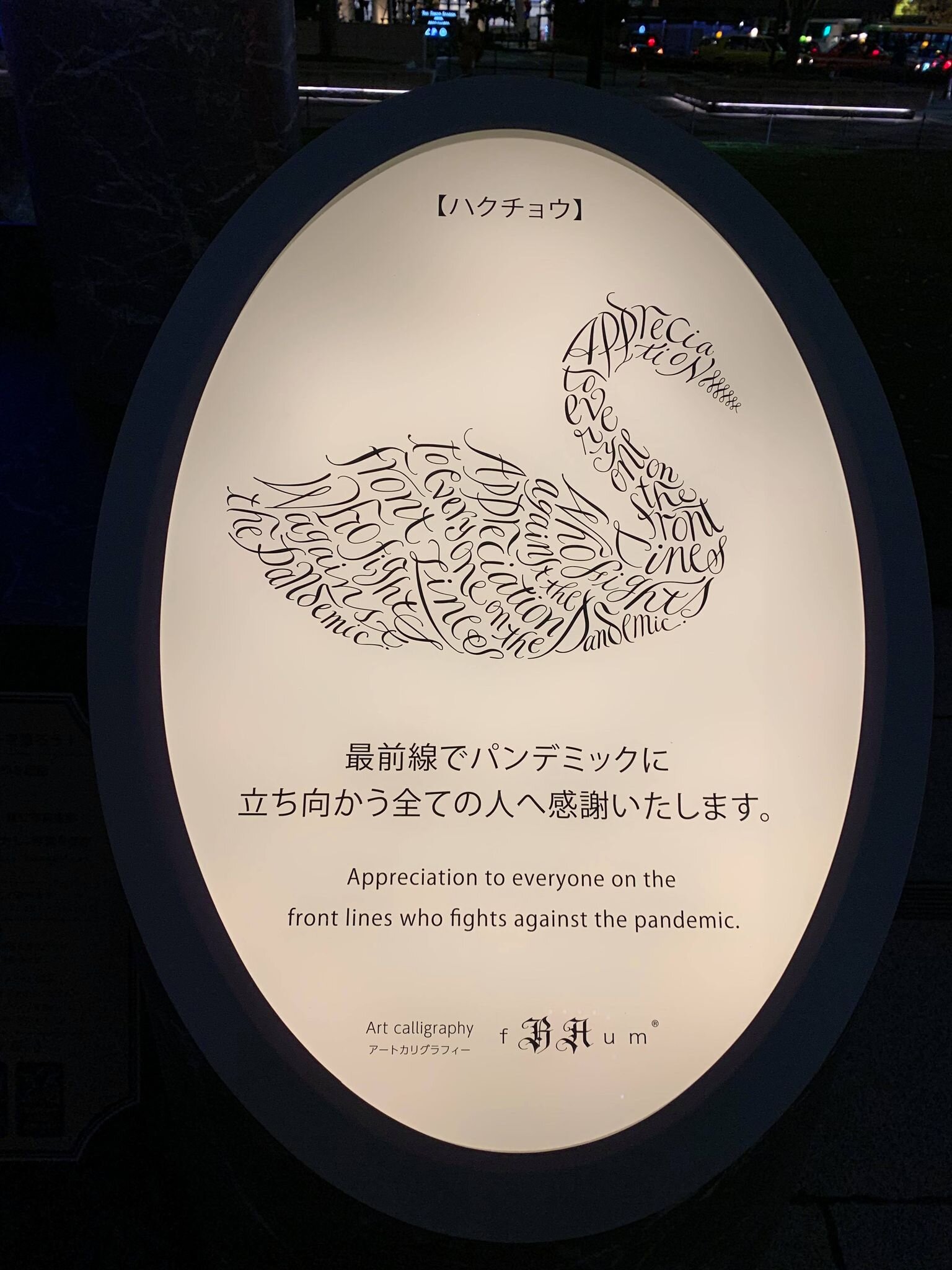
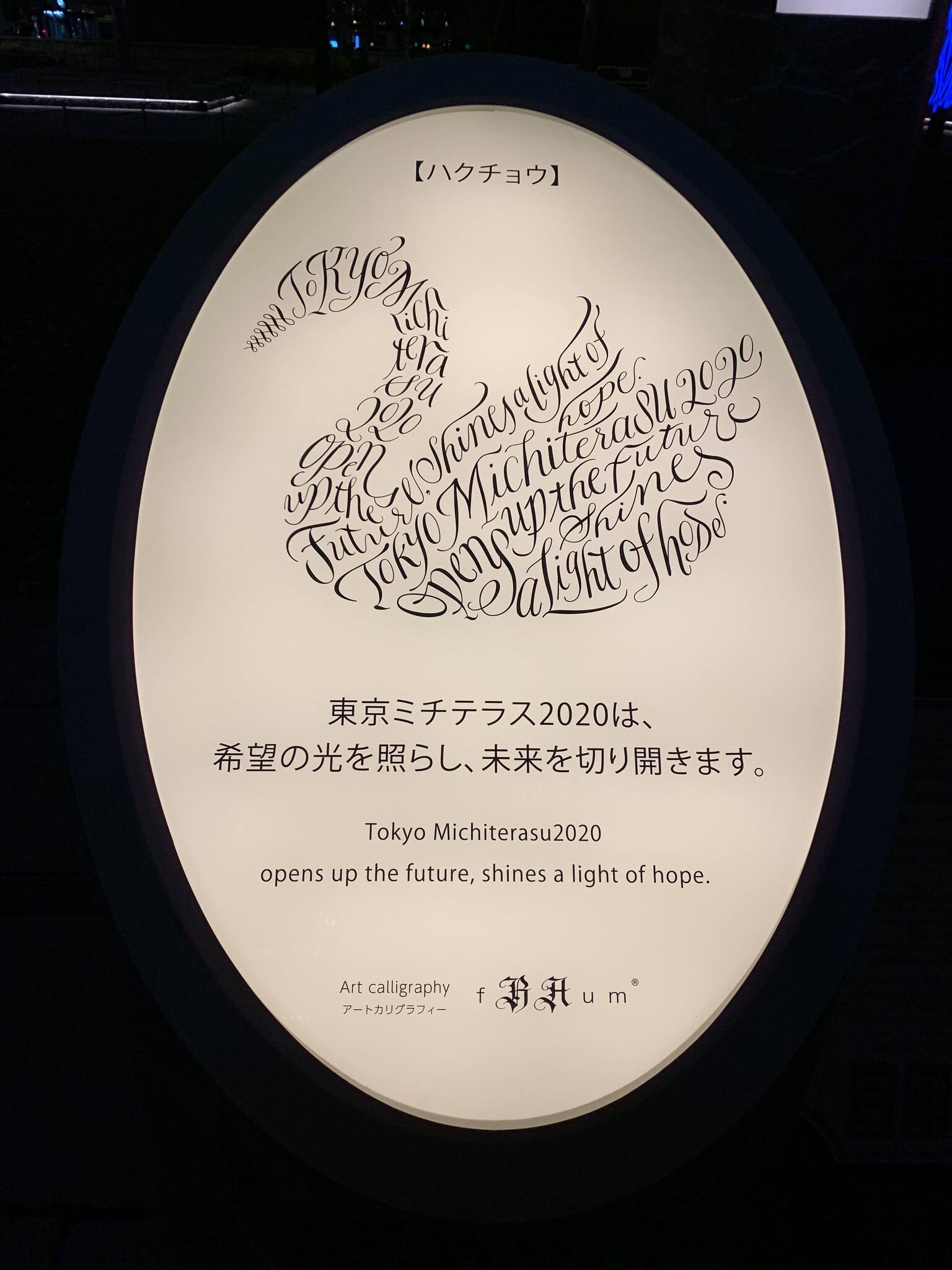
You may find there are many different characteristics in the city of Tokyo. Where history, the future and culture meet. Surrounding Tokyo Station, this area continues to emerge as a unique city where history, tradition, culture, science, business, and innovation blend together dynamically and form a hub that connects Tokyo, Japan and the world.
This unique light and illumination event has become the area's winter tradition since Tokyo Millenario was first held in 1999. This year, Tokyo Michiterasu 2020 is still hosting during the global pandemic, hoping to light the way of all of us to the future: Michi (unknown) and terasu (light). This event hopes to deliver a message of support and thanks to the people working towards the new era (the "new normal") from Japan's heart.
For those who can’t visit in person, Tokyo Michiterasu 2020’s official website offers a particular movie. It features five short stories told by art calligraphy animals in Tokyo Station Marunouchi Station Square and on Gyoko-Dori Street. Please enjoy whereby the dark world grows with the light of hope.
Episode 1:
Living is not breathing but doing - Jean-Jacques Rousseau
Episode 2
Because love is, that forgives the conflict of opinion with mistakes and their own that person. - Florence nightingale
Episode 3
The best way to cheer yourself up is to try to cheer somebody else up - Mark Twain
Episode 4
If you fantasize anyway, it’s best to have a wonderful imagination. - Lucy Maud Montgomery
Episode 5
True courage and kindness go on with people together. - Samuel Smiles
The video will be released on December 24, 2020
Event Details
The name of the event: Tokyo Michiterasu 2020
Opening period: Thursday, December 10 - Friday, December 25, 2020, from 3:00 pm ~ 9:00pm
*Some of the online content is scheduled to be available until Thursday, December 31. AR is available both daytime and nighttime at the venue.
The venue: Tokyo Station Marunouchi Station Square, Gyoko-Dori Street
The hosts (in no particular order) East Japan Railway Company Tokyo Branch and Mitsubishi Estate Co., Ltd.
Other sponsors (in no particular order)Ministry of Land, Infrastructure, Transport and Tourism; Chiyoda Ward; The Chiyoda City Tourism Association; The Tokyo Chamber of Commerce and Industry; Tokyo International Forum Co., Ltd.; The Council for Area Development and Management of Otemachi, Marunouchi, and Yurakucho.
For more information, please visit: https://www.tokyo-michiterasu.jp/en/
The Green Soul of Zegna - the Dream of Zero Waste Possible
At Zegna, they have taken care of the world we live in from the beginning, following in the footsteps of their founder Ermenegildo Zegna. This is their company mission, based on a constantly-evolving thought: looking at the future with the belief that our actions today will shape our tomorrow.
“At Zegna, we have taken care of the world we live in from the beginning, following in the footsteps of our founder Ermenegildo Zegna. This is our company mission, based on a constantly-evolving thought: looking at the future with the belief that our actions today will shape our tomorrow.”



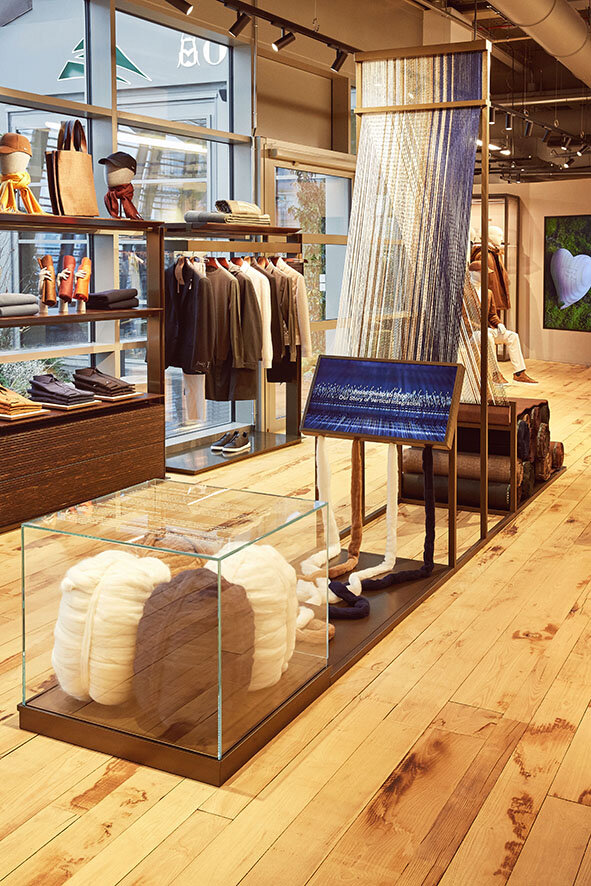
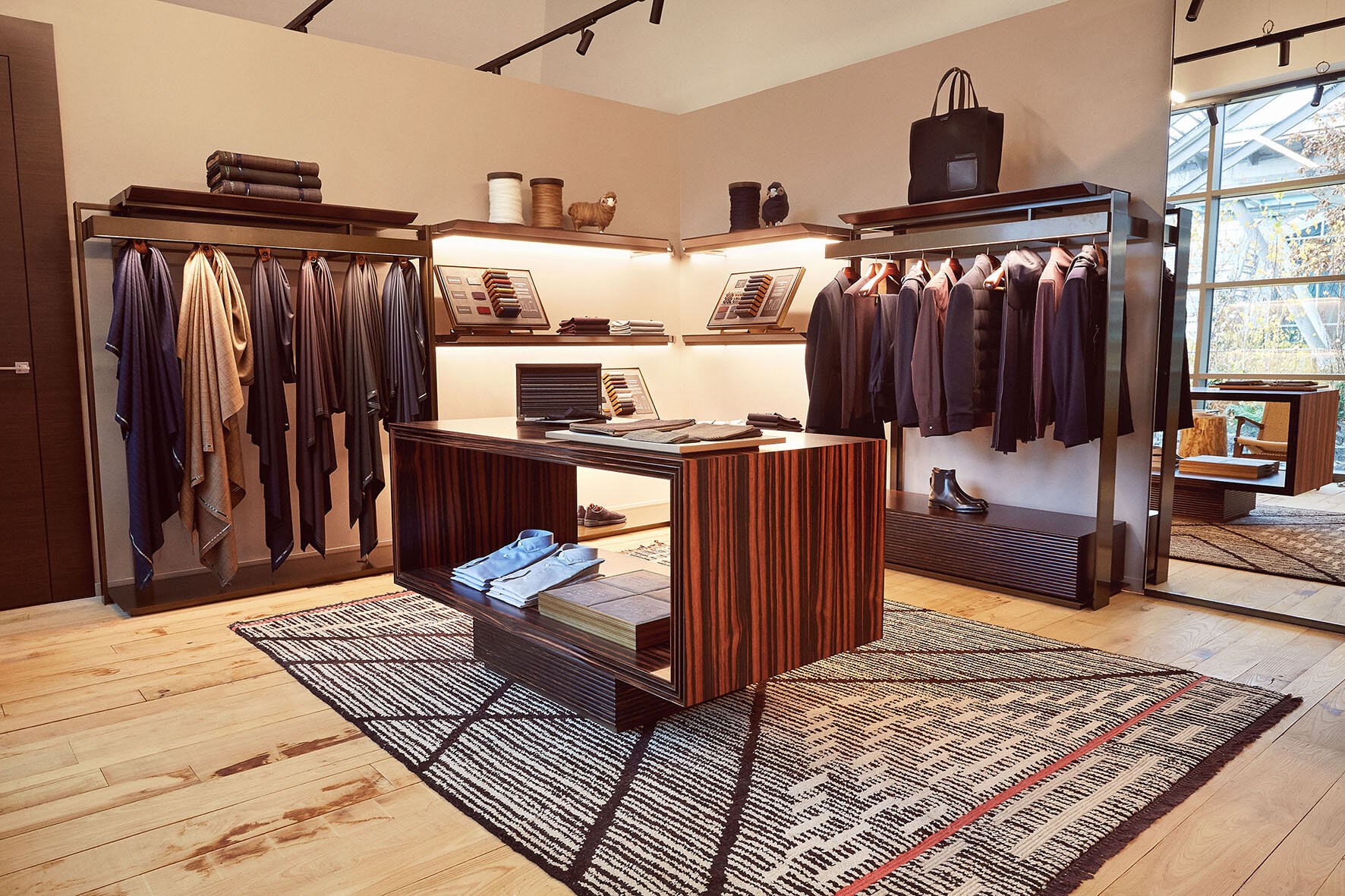
At Zegna, social and environmental responsibility have been our roots for 110 years. When they were founded in 1910, Ermenegildo Zegna’s dream was not just to create the world’s finest textiles but to make his hometown and the world around it a better place, ensuring the highest-quality products without compromising the quality of life for future generations. His vision is still the heart of everything we do. The environment is at the core of our efforts: we believe the very best garments can only come from the best natural resources, and that these resources need to be cared for. The advanced vertical integration of our business model facilitates our journey towards a sustainable product and holds us accountable for responsible practices and processes.
2020 marks our 110th anniversary. On this landmark year, we are proud to renew our sustainability pledge, exemplified by OASI Zegna, where our Lanificio Zegna was established and our green philosophy was ignited. OASI Zegna is a unique model of our environmental consciousness, a territory that now covers 100km2 from Trivero to Valle Cervo in the Alpi Biellesi, which would not have been possible without the visionary approach of our founder.
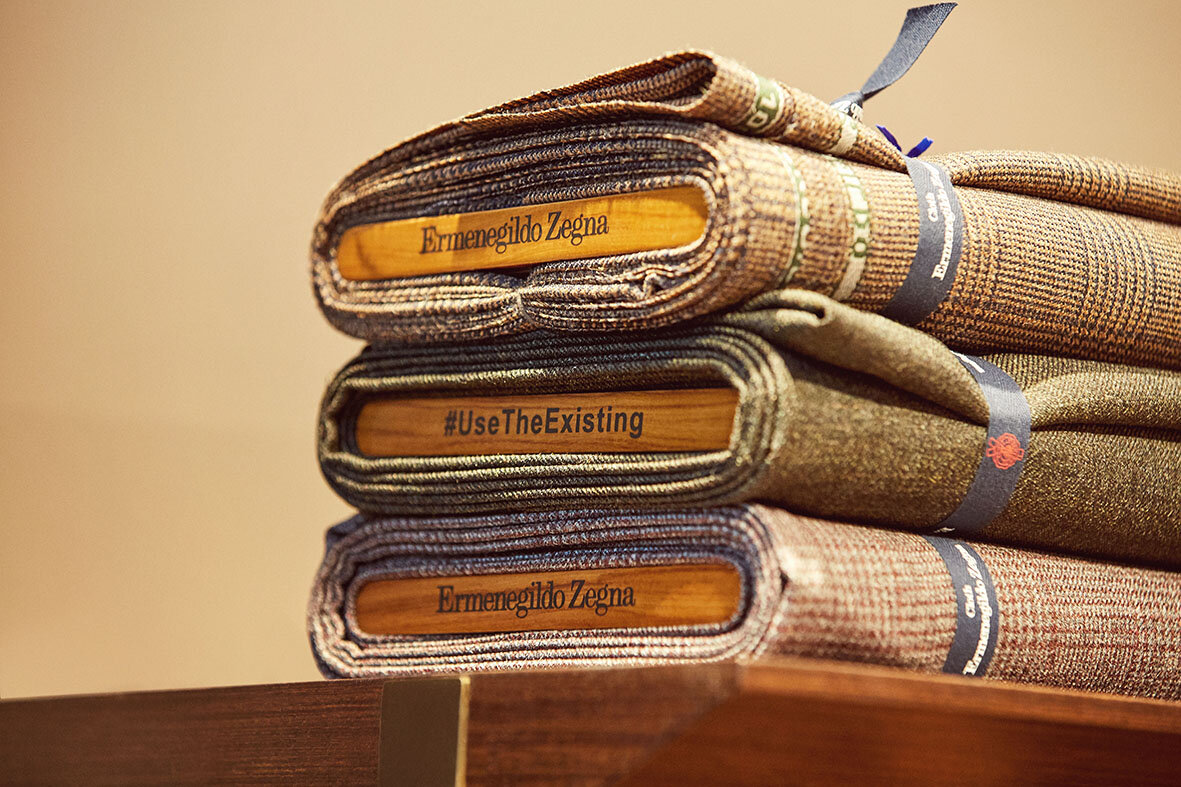
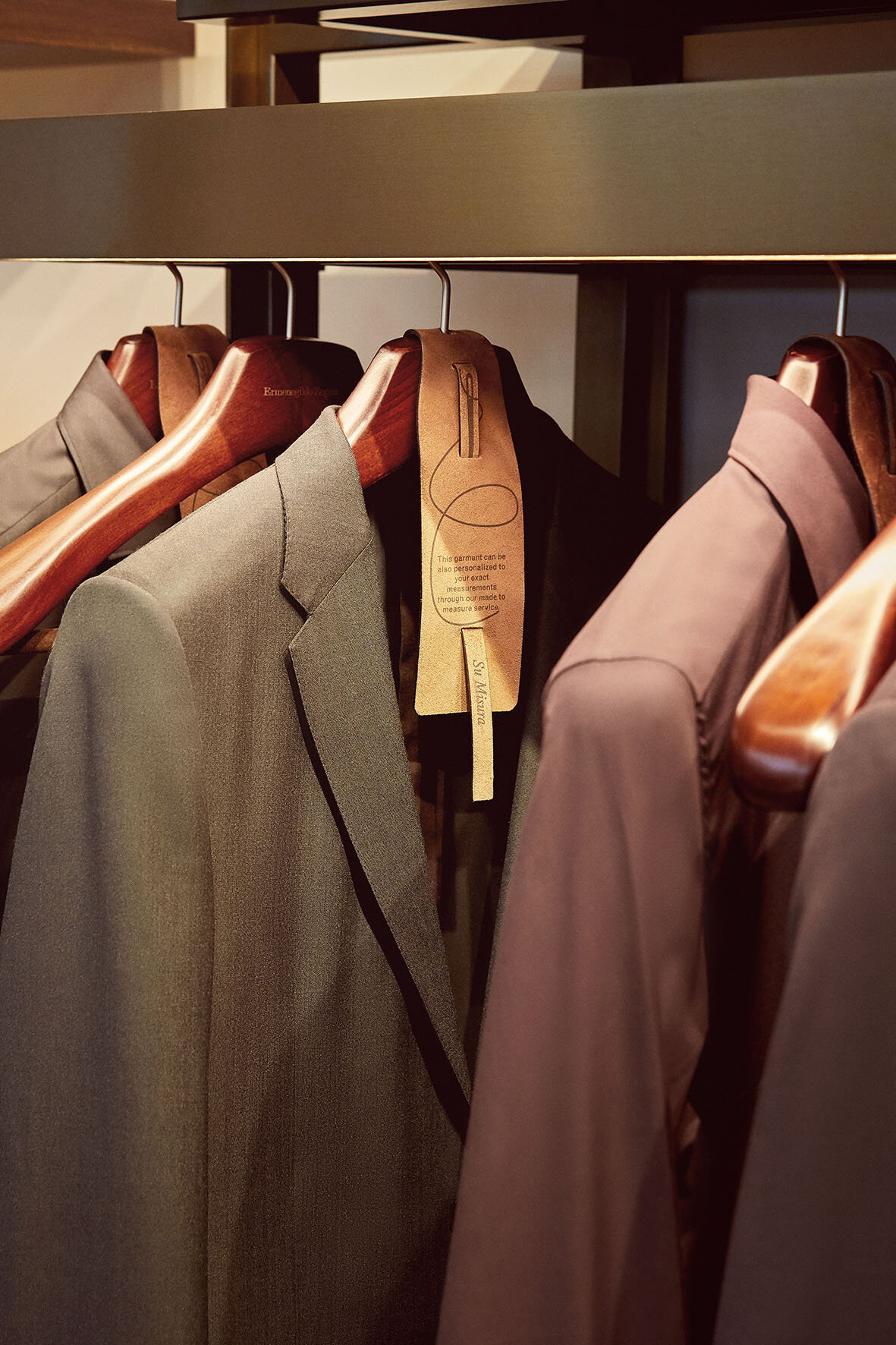

“In an ever-changing world, luxury companies can simply adapt to changes or choose to be a positive force in driving these changes. Our responsibility is to leverage our past to build a better present and future. This carries over into everything we do, following our founder’s legacy. I’m very pleased that Zegna is part of the Green Pea project, partnering with Oscar Farinetti who shares the same sustainability ethos with us”, says Gildo Zegna, CEO of Ermenegildo Zegna.”
Meanwhile at Z ZEGNA, we continue to push the boundaries to explore sustainable fashion solutions, and use recyclablematerials to create the Z ZEGNA FW20 #Usetheexisting Nylon Padded Jacket and Vest. The extra-light recycled nylon stuffing creates feather-like comfort, whilst outstanding weaving and craftsmanship ensurewaterproofing and warmth. The streamlined design is ideal for outdoor adventures and city life alike, with functional details such as a patch pocket on the chest, zipper side pockets covered by a sleek, peach-skin technofabric shell, and a drawstring at the bottom. A carefree choice for contemporary gentlemen to mix and match, the Z ZEGNA FW20 #Usetheexisting Nylon Padded Jacket and Vest come in four colour options: black, red, bright yellow and dark green.
“Morethan a simple project, #UseTheExisting is a state of mind,” says Artistic Director, Alessandro Sartori. “The main goal is to rework the fashion system in order to reduce our ecological footprint. At Zegna, we are trying to reuse resources in order to not waste any materials in the production chain. It is a mission and a vision in which we are investing a lot. This is the principle behind the latest and future collections.”
Together, wecan build a better tomorrow.
For more information, please visit: www.zega.com
ZEGNA AND LEICA JOIN FORCES IN A COLLABORATION TO BE LAUNCHED GLOBALLY
Fashion meets Photography: the exclusive collaboration between Zegna and Leica Camera, the legendary German camera manufacturer, yields a capsule collection of high-end camera accessories, possibly the most refined to date.
Fashion meets Photography: the exclusive collaboration between Zegna and Leica Camera, the legendary German camera manufacturer, yields a capsule collection of high-end camera accessories, possibly the most refined to date.
Debuted in January 2020 on the runway of the Ermenegildo Zegna XXX Winter 2020 Fashion Show, this highly expected capsule collection finally comes to life.
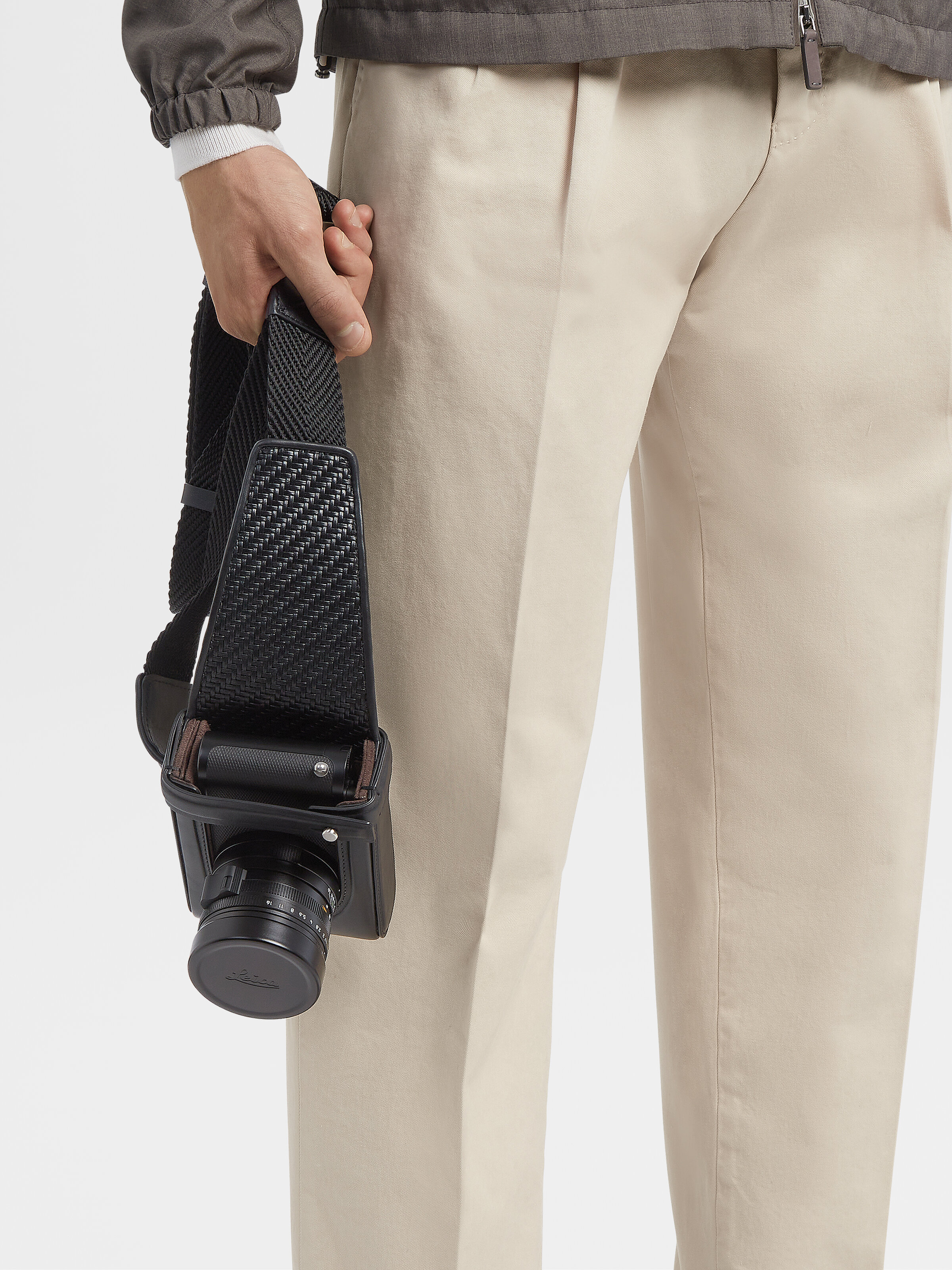
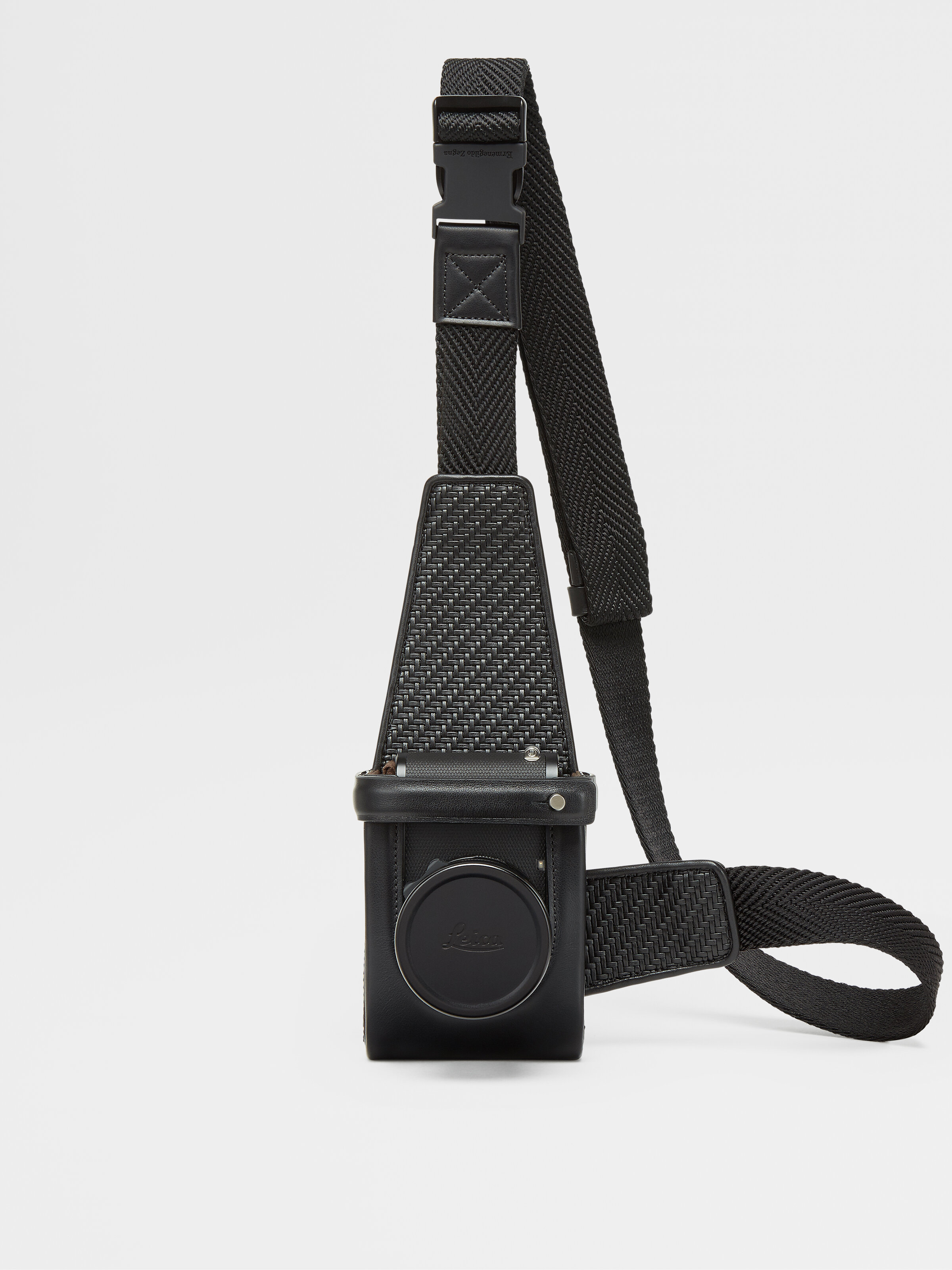
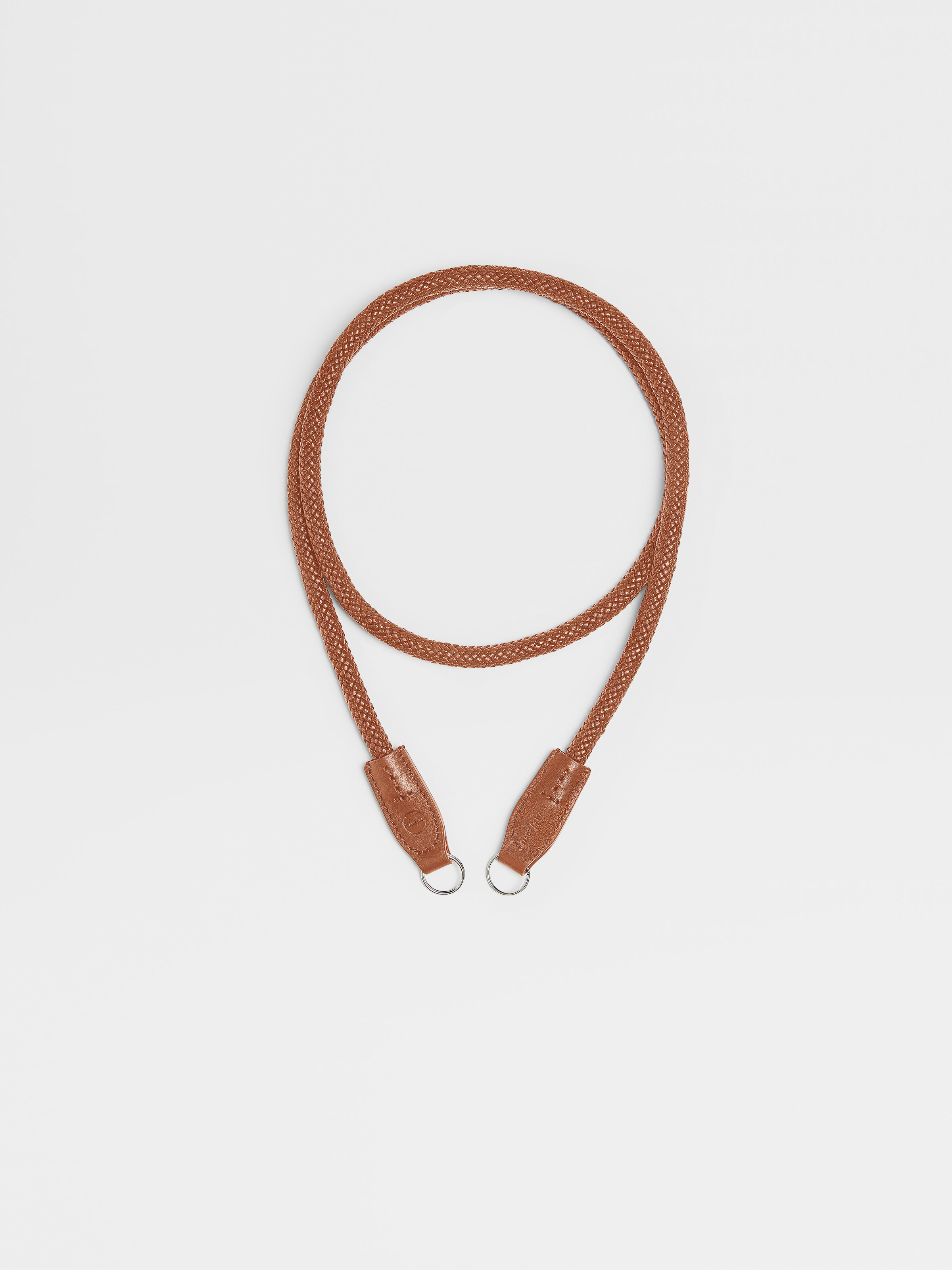

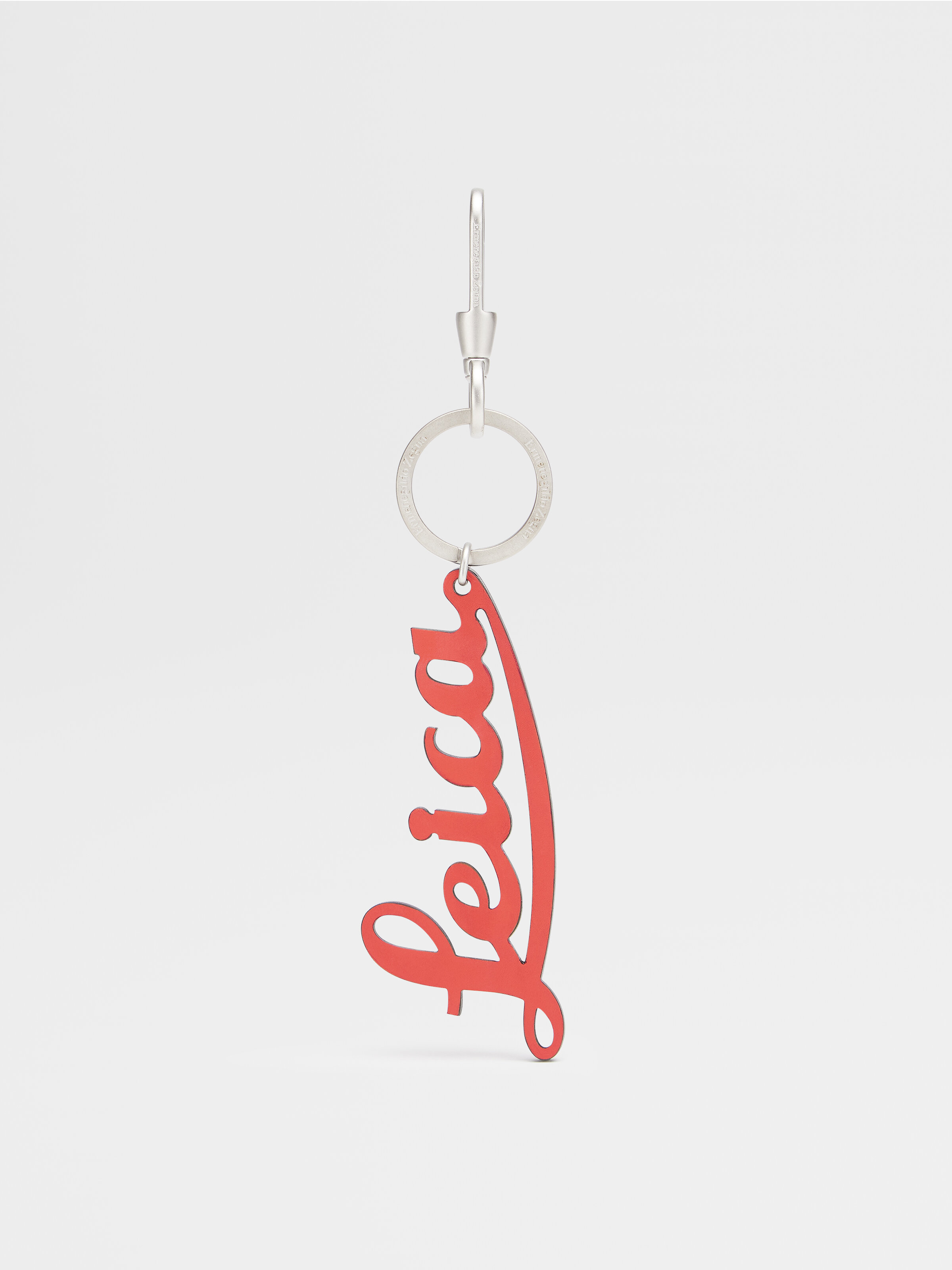
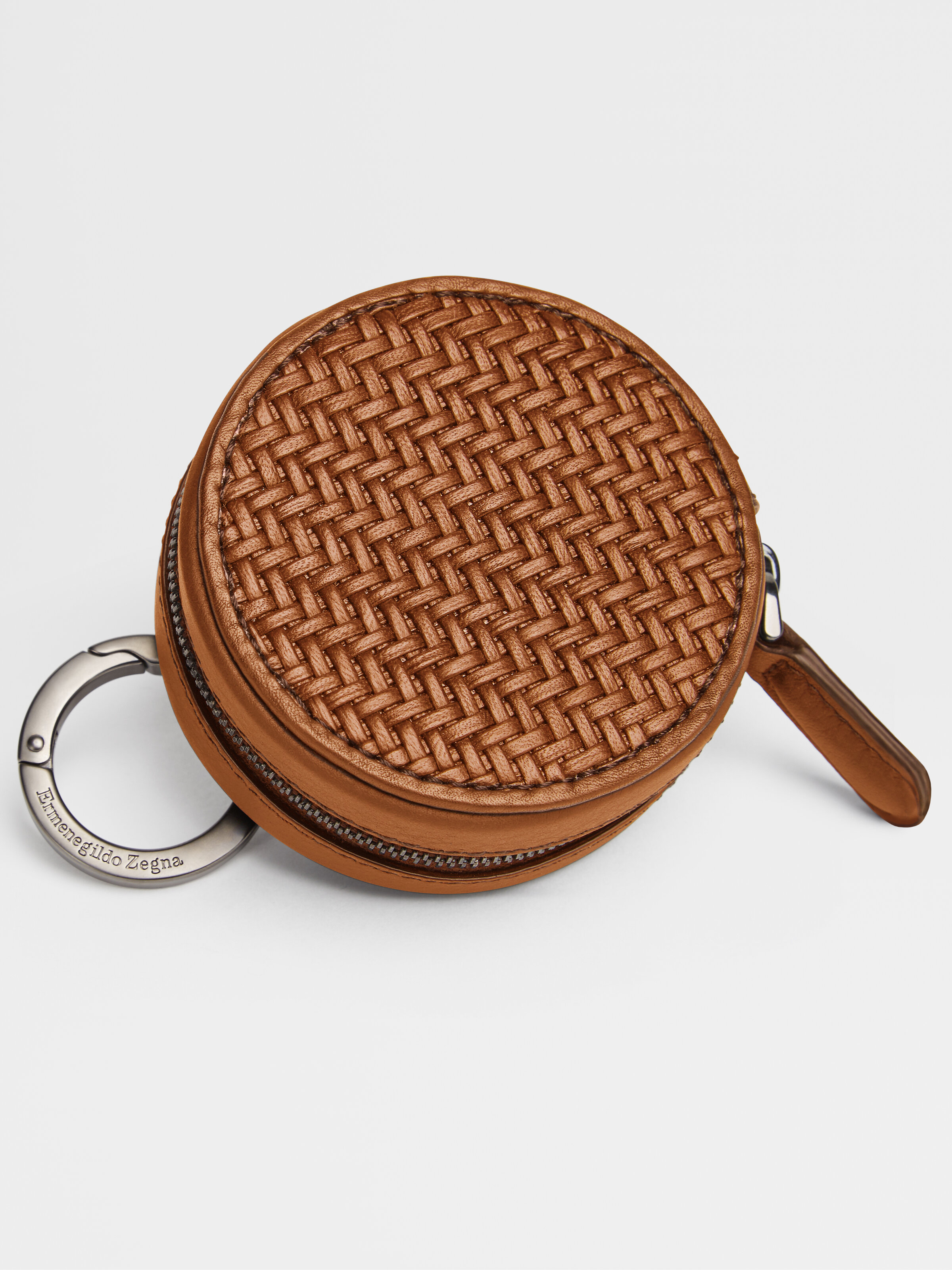
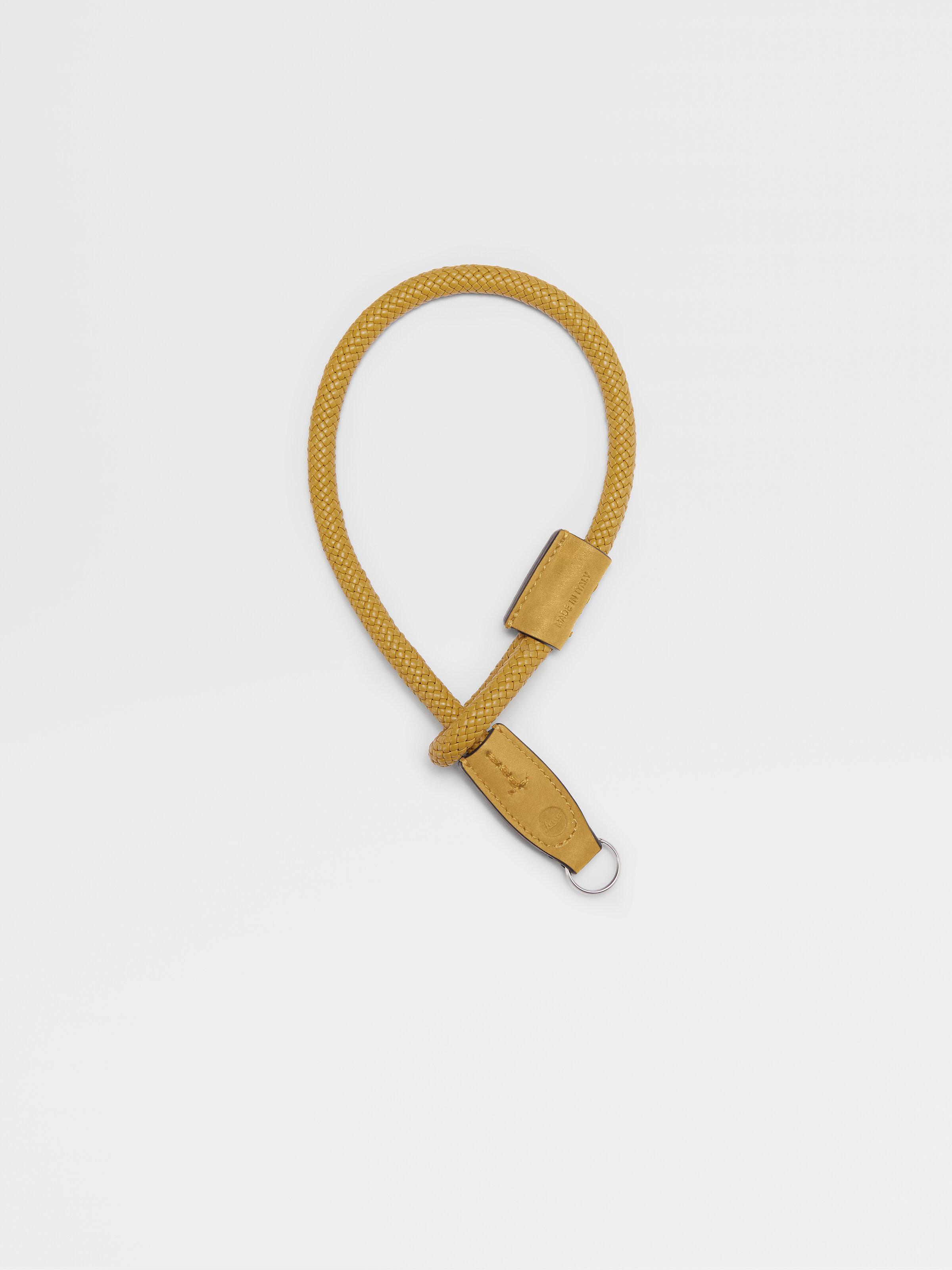
Designed for the modern photographer, in search of the most beautiful image but equally attentive to the subtle details of handmade craftsmanship, the collaboration strengthens the link between two expressions of art and creativity, reflecting a broader dialogue between the two brands.
Zegna Artistic Director Alessandro Sartori, a photography enthusiast and authentic Leica lover, has always been inspired by photography as a creative language that he often visually uses as a reference for his collections. His own passion led Zegna to a collaboration built upon the mutual expression of creativity and innovation, craftsmanship and technicality which further cements Zegna’s reputation as a global luxury lifestyle brand.
The collaboration collection consists in PELLETESSUTATM camera holsters for Leica Q2 and Leica M cameras; PELLETESSUTATM protectors for Leica Q2 and Leica M cameras; functional crossbody bags called Insta-Pack, inspired by photographers’ attitude that fit almost all Compact Leica cameras (Leica V-Lux excluded) and the Leica CL with the 18mm ‘pancake’ Leica lens; carrying and wrist straps; Leica keyrings and round wallets (both for coins or the Leica Q2 lens cap) that feature luxury details and precious touch of the PELLETESSUTATM collection, an iconic Zegna special woven nappa, result of an innovative Ermenegildo Zegna research aimed to recreate precious fabric using extremely thin strips of selected nappa leather in place of fabric yarns.“
“Zegna and Leica share the same values and very deep integrity and quality towards the excellence of their own products; my wish is to build up a long chapter together. The vision and the DNA of Leica have always been genuine, an obsessive quest for quality, extremely refined research, a very unique approach towards not only the world of camera and photography but mostly towards the craftsmanship and a distinctive syntax” says Alessandro Sartori, Zegna Artistic Director.
“What a wonderful addition: The creation of a Leica camera, moving images and a Zegna garment is unique and outstanding. Both brands share the same humanistic approach for values, design, sustainability, and quality” says Karin Rehn-Kaufmann, Leica Global Director Art and Leica Galleries.

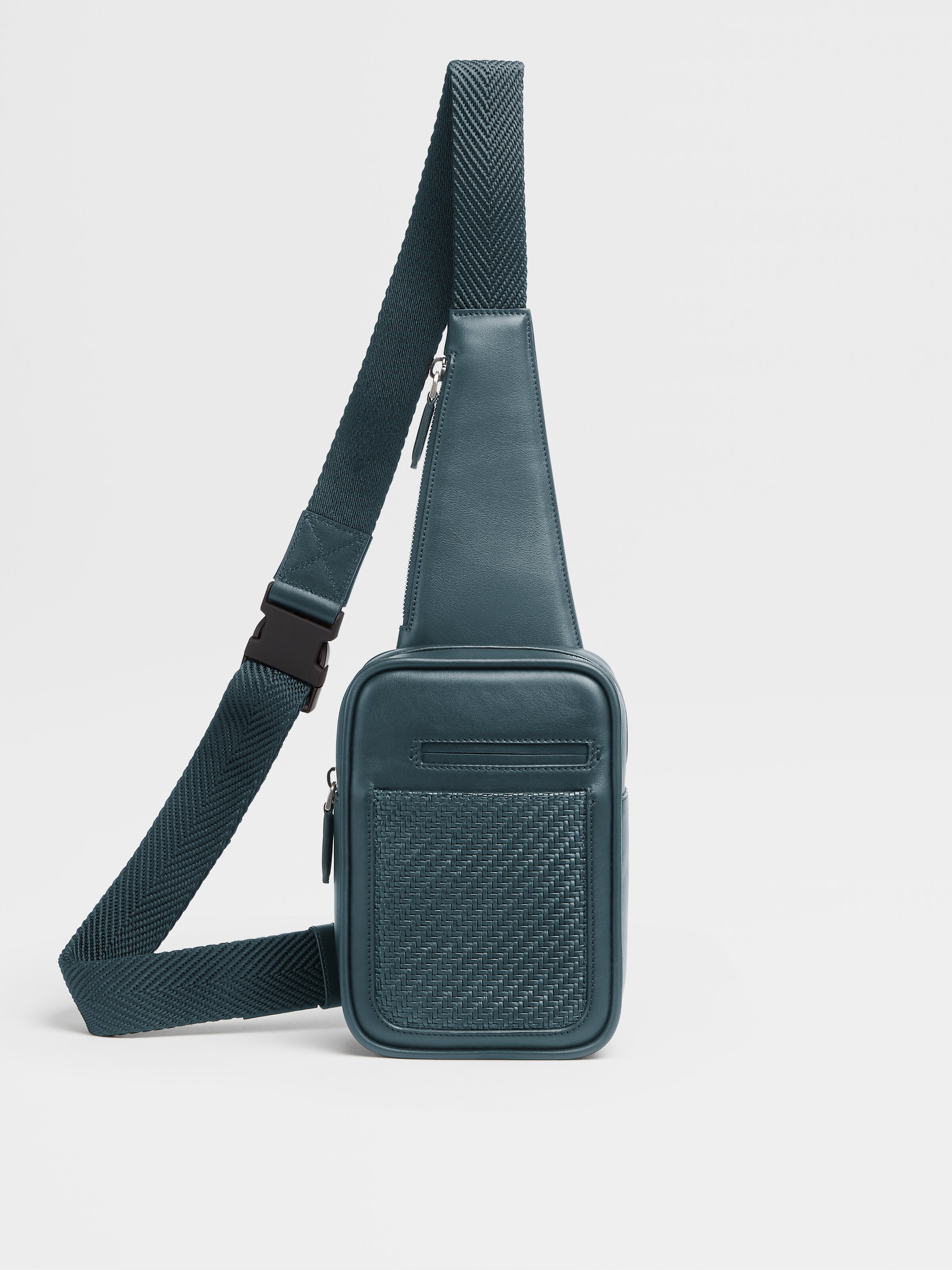



The Zegna and Leica collaboration collection are distributed globally in an exclusive selection of Zegna Flagship Stores (such as New York City, Paris, London, Milan, Dubai, Shanghai, Beijing, Ginza, Isetan) as well as in 60 select Leica stores worldwide.
The collection is also available on-line, on zegna.com and leica-camera.com.
KUKAN DESIGN AWARD 2020
Established to connect the value of spatial design to the future, the KUKAN DESIGN AWARD is the most esteemed of such awards in Japan. Our society grows increasingly complex, our values are changing, from valuing a wealth of things to respecting wealth in our hearts, and meanwhile, we face many challenges. The mission behind the KUKAN DESIGN AWARD is to excavate the solution to our society’s multi-faceted challenges and breakthrough to a hopeful future.
On November 13, 2020, the Kukan Design Awards ceremony was successfully held at the Tokyo Design Center (Gotanda, Tokyo). Due to the global pandemic, only winners and invited parties were invited to celebrate in the ceremony.
Kukan Design Awards were established to connect with the value of spatial design toward the future. Co-organized by DSA (Japan Design Space Association) and JCD (Japan Commercial Environmental Design Association), it is recognized as the most prestigious spatial design award in Japan.
The winning project "Shibuya Sky" and "Fukadaiji Garden Restaurant Maruta" and "Kumamoto Castle Special Tour Passage" have been awarded as "KUKAN OF THE YEAR 2020", the grand prize of this year.
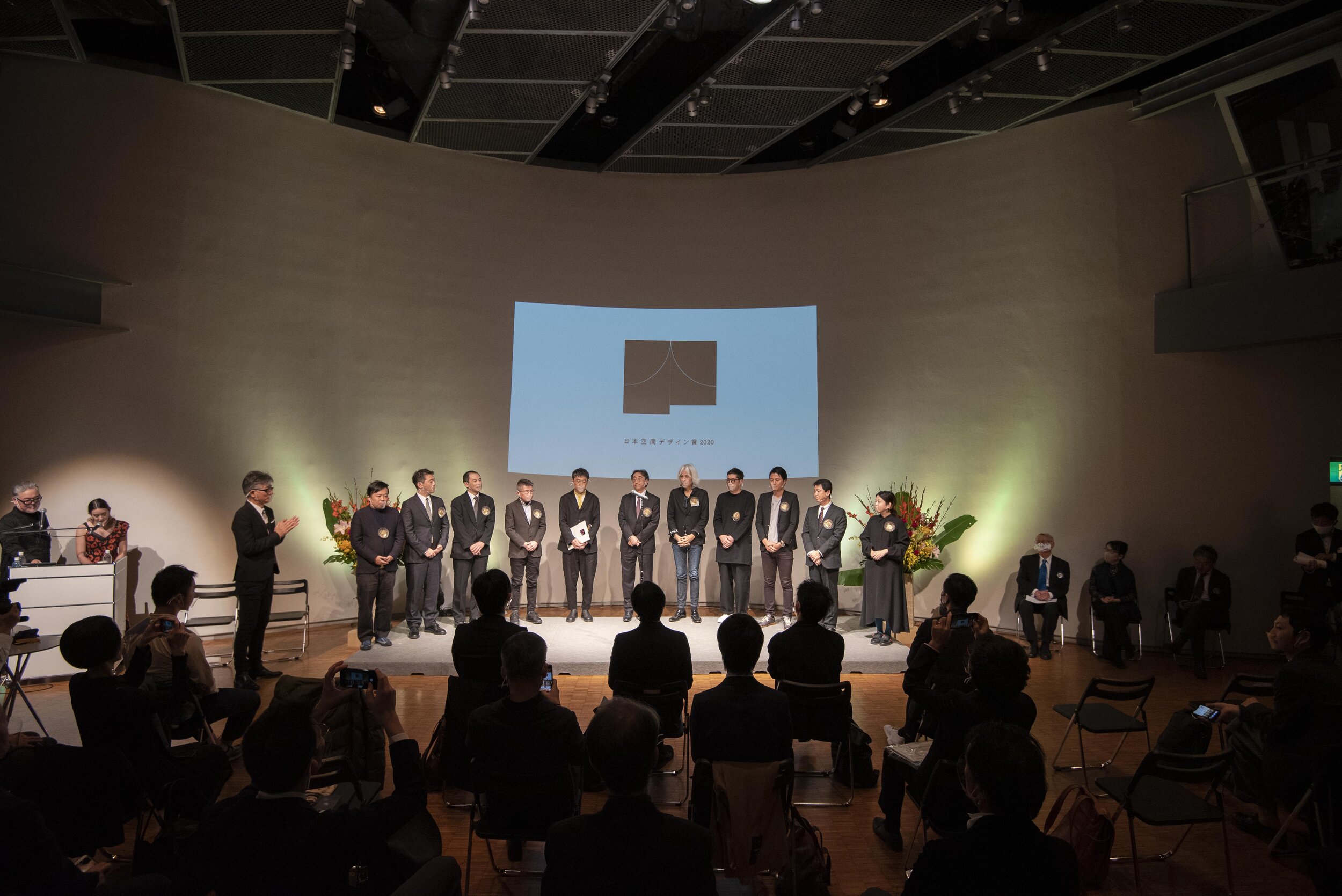
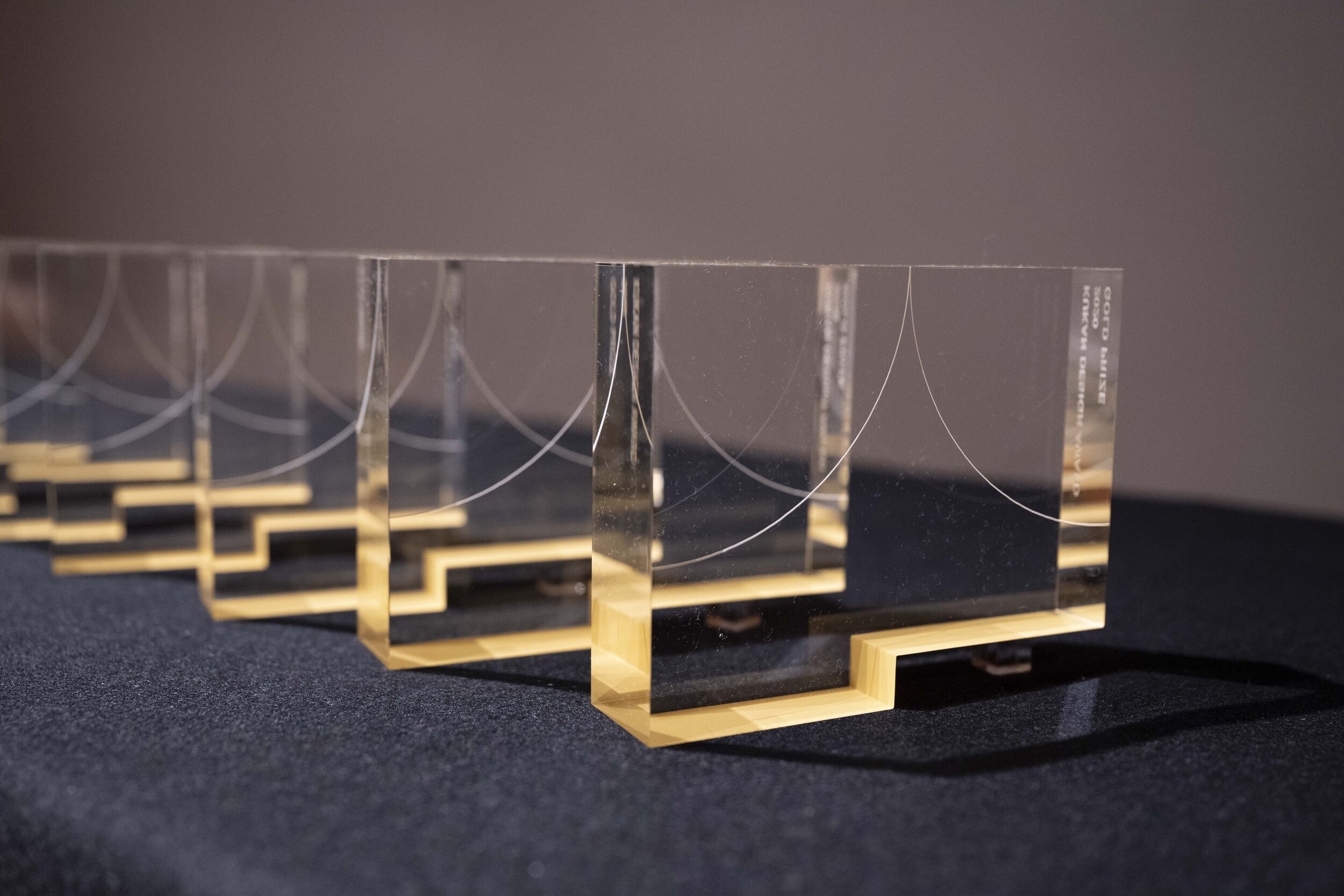
KUKAN OF THE YEAR 2020
Winning Project: Shibuya Sky
Design by: Tadao Kamei / Takeyuki Katsuya / Shibuya Station Area Development Planning Joint Venture (Nikken Sekkei), Keisuke Arikuni / RHIZOMATIKS
Photographer: SS Tokyo, Kenichi Suzuki, Keita Sinya (ROLLUPstudio.)
Winning Project: JINDAIJI GARDEN Restaurant Maruta
Design by: Shunichi Furuya/ FURUYA DESIGN ARCHITECT OFFICE
Photography: Shinkenchiku-sha
Winning Project: Kumamoto Castle Reconstruction Observation Path
Design by: Yuzuru Tsukagawa + Shun Hori / NIHONSEKKEI
photography: Kenji Masunaga
KUKAN DESIGN TALK
The moderator, Mr. Naoki Iijima (JCD Director), held a discussion session with three champions of KUKAN OF THE YEAR 2020.
GOLD PRIZE / 2020
KATACHI TO KURASHI
Hokuto Fujii / hokkyok Inc.
Wako Main Bldg. / Multiple
Jun Musashi / Wako, Hokuto Ando / we+, Toshiya Hayashi / we+
mother's+
Junichi Yokoo / TAKENAKA CORPORATION
Shibuya PARCO - HULIC building
Yuuji Hamano, Yoshiharu Kabe, Nobuhiko Kakitani / TAKENAKA CORPORATION
The Hotel Seiryu Kyoto Kiyomizu
Ryu Kosaka / A.N.D., Nomura Co., Ltd
Hiroshi Yoneya, Ken Kimizuka / TONERICO:INC.
“HANEDA SKY CAMPUS” Headquarter of Azusa Sekkei
Kazuyuki Watanabe / Azusa Sekkei
International Dorm-City
Expert Member, Kanagawa University Campus Development Planning CommitteeKukan Design Awards
For more information about KUKAN DESIGN Award, please visit: https://kukan.design/
TIFFANY & CO. Unveils Plans For A Contemporary Glass Addition Atop Its Classic Fifth Avenue Flagship Store
A holistic transformation of this magnitude has not taken place in the building’s 80-year history. Tiffany is embarking on the project in partnership with the renowned architectural firm, The Office for Metropolitan Architecture (OMA). Led by Partner Shohei Shigematsu, OMA New York is engaged in specific aspects of the transformation–including a reimagined upper addition.
For the first time, Tiffany & Co. is revealing exterior renderings of the transformation underway at its Fifth Avenue flagship store. The upper addition (floors 8, 9 and 10) of the 10-story architectural icon located at 727 Fifth Avenue will be completely reimagined from office space originally constructed in 1980, into a new exhibition, event and clienteling space. Surrounded by a curtain of undulating glass complementing the classic limestone façade below, the contemporary structure above this historic building echoes the height and grandeur of the flagship’s timeless main floor. Construction began on Tiffany’s flagship transformation in spring 2019 and is estimated to be complete in spring 2022.
“The Tiffany & Co. Fifth Avenue flagship is arguably one of the most beloved and well-known luxury retail spaces in the world. It's a place where so many have memories of important moments in their lives, filled with emotion and anticipation of the extraordinary,” said Reed Krakoff, Chief Artistic Officer, Tiffany & Co. “Tiffany’s newly transformed flagship will reflect the future of our brand while honouring our 183-year legacy.”
A holistic transformation of this magnitude has not taken place in the building’s 80-year history. Tiffany is embarking on the project in partnership with a renowned architectural firm, The Office for Metropolitan Architecture (OMA). Led by Partner Shohei Shigematsu, OMA New York is engaged in specific aspects of the transformation–including a reimagined upper addition.
The ambition for the design of the new upper volume is to create a vertical continuity with the existing structure, while also setting it apart as a bold and innovative addition to the building. The corniced parapet of the original building will be mirrored by a slumped glass façade above. The eye is drawn upward creating a gentle transition between the two structures. This ribbon-like design detail brings a sensuality to the building, instilling a softness among the curtain walls of the building’s neighbours.
The recessed glass exhibition and event space will echo the feeling of the main floor with its column-free, double-height ceilings. The expansive glass facade brings an openness to both sides of the building and opens up to an outdoor terrace that will offer guests a view from the world’s most famous intersection for luxury retail, and up Fifth Avenue to Central Park.
The expansive Tiffany flagship was a symbol of modern architecture when it was built in 1940. The grandeur and essence of that majestic space will remain and continue to awe guests as they enter the renovated store in 2022. An evolved luxury retail experience will draw consumers inside once again and inspire them to journey from the main floor up through the entirety of the building.
In the interim, the Tiffany Flagship Next Door located at the adjacent 6 East 57th Street will continue to serve as Tiffany & Co.’s home, showcasing the entire breadth of the Brand’s extraordinary collections, until the original flagship’s completion in spring 2022.
For more information, please visit: https://www.tiffany.com


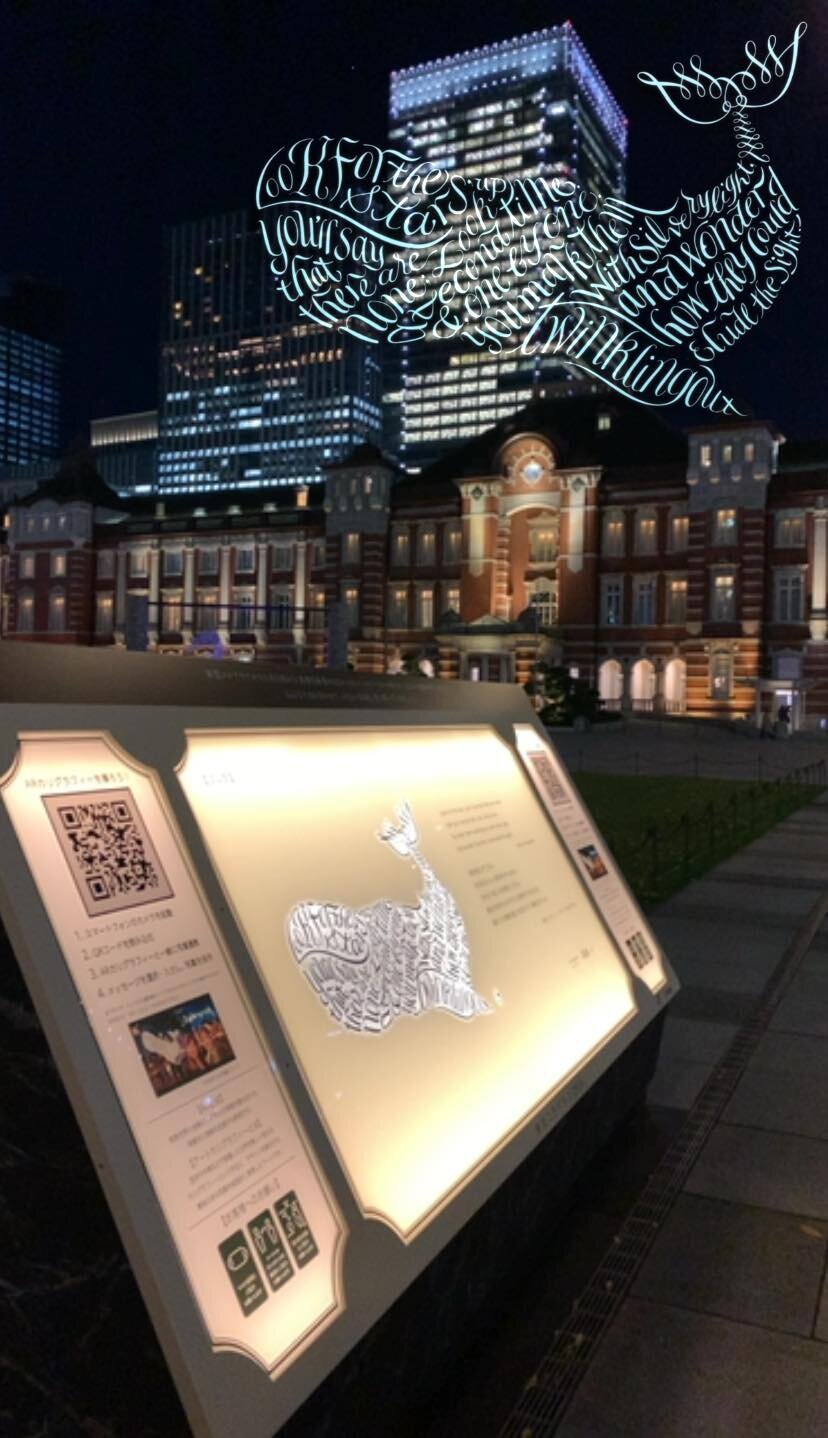





![[FOR DIGITAL ONLY] FW20 Leica - 03 9x16.jpg](https://images.squarespace-cdn.com/content/v1/5260d046e4b0c0ba62540470/1607322652279-JAV9WNOVU431207KO4JK/%5BFOR+DIGITAL+ONLY%5D+FW20+Leica+-+03+9x16.jpg)









